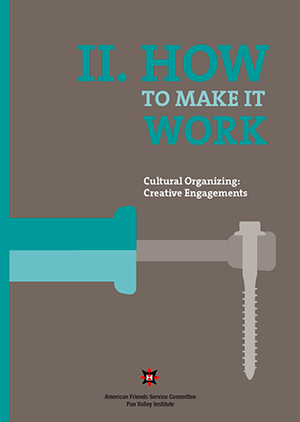
Cultural Organizing in Practice: What Does
it Look Like?
Cultural organizing is a strategy that aims to revitalize and sustain immigrants’ artistic expression and cultural practices. Following the values and guiding principles of popular education and participatory action research, we see cultural organizing as a concrete step toward building a community that is cohesive and capable of responding to social challenges.
Working in the context of culturally diverse communities like the Central Valley, cultural organizing also implies an intercultural learning process that encompasses understanding, respect for differences, and negotiating to engage in collaborative community-building practices. It also involves a cross-pollination of ideas and traditions among different ethnic groups living in the Central Valley.
Cultural Organizing Principles
• Cultural organizing broadens the conversations about the power of arts and culture for transformative social change
• We build political power by engaging with the influential tenets of cultural heritage, including local cultural knowledge and by validating the importance of tradition, language and indigenous expression
• We place specific focus on placemaking by engaging all aspects of place: local artists, local communities, local voices, local initiatives
• We believe that acts of creativity, self-expression and identity formation are central to activating change
• We are developing deeper understandings of the role
of artists, interdisciplinary conversations, and contexts
of place to build stronger, more active communities
Ideas for Practicing Cultural Organizing
• Provide spaces for expressing and sharing cultural
and artistic traditions
• Engage diverse cultures in the production of innovative cultural and artistic expressions to build vibrant and active communities
• Provide spaces for reflection and dialogues that address issues of cultural discrimination, colonization, internal colonization and internal oppression
• Get immersed in the community and develop inventories
of cultural assets
• Provide opportunities for regaining cultural knowledge
“Cultural organizing is a process by which immigrants, particularly indigenous communities, are provided with the opportunity to continue practicing their traditional cultural and artistic customs. Such practices help immigrants develop their sense of belonging by allowing them to share their cultural and artistic customs with other community members. Most importantly, cultural organizing promotes and supports the cultural preservation and identity of immigrants.”
Pat Lor
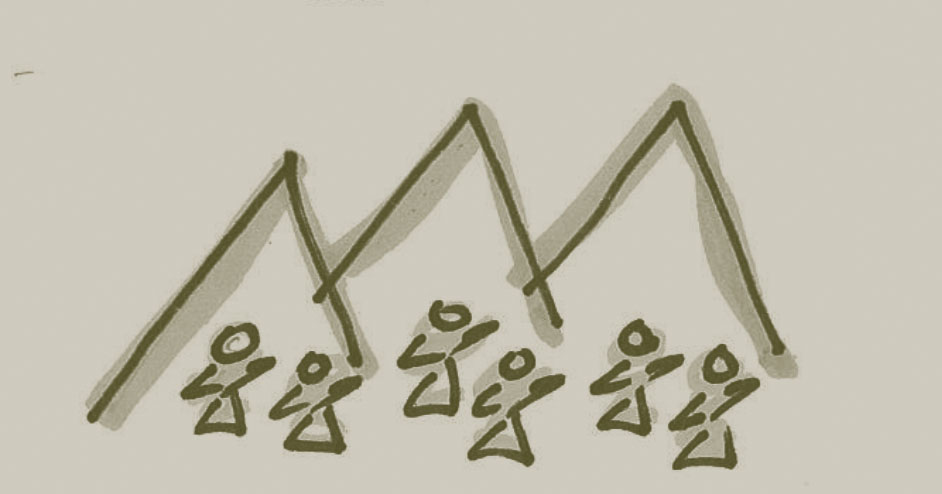

Principles
• Cultural organizing uses the arts and culture to bring about social change

Tips
• Cultural organizing is not just about organizing an event
• Cultural organizing has to be collective
• An event is the culmination of a learning and cultural exchange process
• Events have a social justice intention; they are not just about entertainment
References
• The Theory Behind Our Work booklet
• Cultural Organizing section tools
An Example of Cultural Organizing
This tool provides an example of what cultural organizing looks like in practice.
A Pan-Valley Institute Success Story
One of the intents of our cultural organizing work is to provide spaces, resources and opportunities for immigrants to reinstate their culture and creative expression. In 2006, we organized the Tamejavi Festival in Madera, Calif. with the goal of highlighting the presence and diversity of the Mexican indigenous that now call that city home. One of the roles of the members of the planning committee was to identify artistic and or artisanal skills within their own communities. Juan Santiago, a member of the planning committee, comes from a family where his mother and other women are palm weavers. Juan organized an intergenerational palm weaving workshop where the older women could teach the next generation the skill of palm weaving.
At this workshop, participants realized they needed to preserve the palm weaving knowledge that has distinguished the town of San Juan Coatecas Altas in Oaxaca, but they ran into a problem because the kind of palms they needed can only be found in Oaxaca. The Pan-Valley Institute provided resources to bring palms from Oaxaca, and the women were able to display their art of weaving palms at the Tamejavi Festivals of 2006, 2007 and 2009, and have since continued to weave palms.
Getting Started
Observe and learn what artisans exist within a community. These artists may be hard to identify since, as we have learned, many are no longer practicing their art. Once you identify the artists, provide them with the space to come together to recreate their art. This activity is important because they can reclaim their culture while they preserve cultural and artistic knowledge. They can share their knowledge with future generations.
“On a personal level I didn’t learn how to weave as I was supposed to; however, I was able to observe the weaving process and we eventually did other workshops. I saw that an important accomplishment was that we gained trust so that they could continue participating. I think the women felt a sense of belonging because they had the space to do their own art. They felt safe to share their knowledge because they felt they had something to contribute and were willing to do other workshops, including participating at the Tamejavi festival.”
Juan Santiago
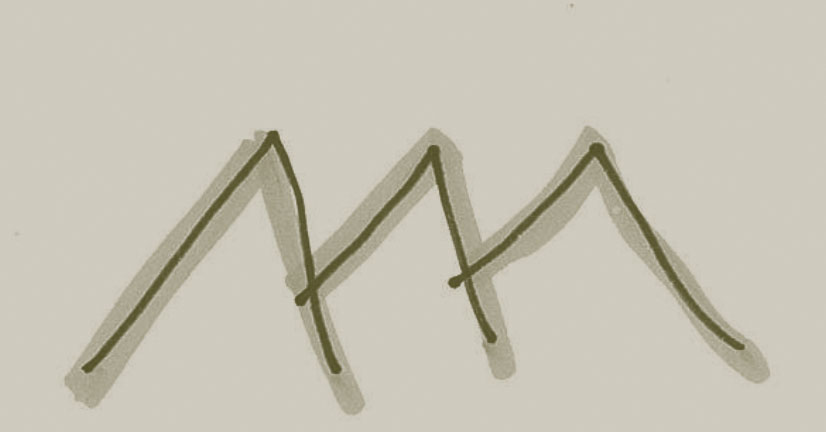

Principles
• Increasing access to public space for cultural expression is key
• Popular participation in cultural production is integral to community life and civic engagement around the world
• There are no set formulas: by encouraging diverse participants to design cultural and art series, festivals and sharing opportunities, something new is created each time, and learning occurs along the way

Tips
• Some people, indigenous groups in particular, might not be to open to sharing their creative expression, art and artisanal knowledge; be patient, respectful, persistent, and keep opening the spaces
References
• The Theory Behind Our Work booklet
• Tamejavi Festival section
Tamejavi Heritage Gallery
This tool provides an example of what cultural organizing looks like in practice.
The Pan-Valley Institute has had success with our Tamejavi Heritage Gallery at past events. This tool, which provides an example of cultural organizing, provides advice for making your own heritage gallery.
Creating a Heritage Gallery
You can create a heritage gallery at meetings, retreats and residential gatherings. Invite attendees to these events to bring an object that represents their culture, art or any other form of creative expression. These spaces provide opportunities to communities whose creative and artistic expression have been ignored. When the objects that represent their culture are displayed in an aesthetically pleasing way, it helps the object’s owner feel validated and can give them a new appreciation for their culture.
How to Get Participants Involved
1. When planning a heritage gallery, send a letter to participants describing the gallery’s intention and asking them to bring an object that represents their community’s cultural and artistic traditions.
2. Let participants know that they should come prepared to make a presentation about the object they are bringing; i.e. what it is, if it has a utilitarian use, how it was made, its personal significance, etc.
3. In the letter, ask participants to send a photo of what they will be bringing so the coordinators of the gallery can start getting ideas of how to curate the exhibit.
4. Include a disclaimer in the letter that the coordinators are not responsible for the care of delicate items.
5. Make sure participants send the correct name and spelling of each item and include the English translation when necessary; this information will be used to label the objects.
6. Be very intentional about the aesthetics of the displayed objects, and exhibit clothing on mannequins whenever possible.
7. When the gallery opens, participants will be asked to tour the exhibit, examine each object and take their own notes and ask questions. Allow at least 30 to 40 minutes, depending on how many objects are being exhibited and the size of the group. Participants should consider the following questions:
• What did you see?
• Did you consider what you saw in the gallery to be art?
Why or why not?
• Think of a question you would like to ask about an object(s).
8. On an index card, each participant will write down the name of the object(s) that grabbed their attention, with one or two questions pertaining to the object, and drop the index card in a box.
9. Once participants are done visiting the gallery and have put their index cards in the box, the facilitator will begin to pull out questions and ask them to the indicated person. Allow 30 to 40 minutes, depending on the questions.
10. Participants will answer the question(s) pertaining to their object and brief discussions will take place.
Materials Needed: pens, index cards, box for cards
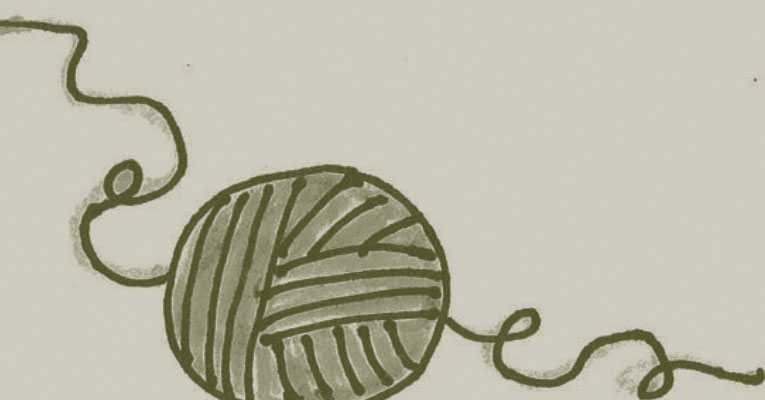

Principles
• Cultural exchange is about doing and learning; it’s not passive spectatorship
• Creating a safe learning space takes patience and is important when convening diverse groups

Tips
• Before the gallery is set up, visit the venue or space where the gallery will take place
References
• The Theory Behind Our Work booklet
• Tamejavi Festival tools
• Cultural Organizing tools
The Challenges of Cultural Organizing
in Poor Communities
Practicing cultural organizing can present many challenges, especially when working in poor communities. To help illustrate these challenges, this tool shares a reflection from Genoveva Vivar, one of the participants of the second cohort of the Tamejavi Cultural Organizing Fellowship Program (TCOFP).
When it comes to organizing newly established communities, such as the Mixteco indigenous community members of Tonyville, many obstacles occur along the way. When I was planning and organizing the “Ashamed No More” event, choosing the date, which one would think would be one of the easiest aspects of planning, became one of my biggest challenges. I had to work around the migration schedules of community members who are seasonal agricultural workers in places like Stockton, Oregon, and Washington. They typically leave around mid-May, and many don’t return to California until mid-August or September.
Even those that work agricultural jobs in the area may have limited availability. During the late summer grape season, the work day begins at 4 a.m. and may last until 7 or 8 p.m., making participation in anything outside of work very difficult.
When working with a community of seasonal farm workers, it may be best to plan events for the months of February through April.
A general lack of interest presents another challenge. People who aren’t normally involved in the community will be less likely to attend a community organizing event, but special events may attract those who are looking to get involved and didn’t know how. Despite the interest in my event from many of the men and women in my community to make the event a success, others failed to show any support or excitement.
“Cultural life in my community means being able to express yourself without the fear of being judged by others, the ability to speak your native language without others looking at you funny, and a capacity for artistic expression through music, cooking and sewing.”
Genoveva Vivar, TCOFP alumna
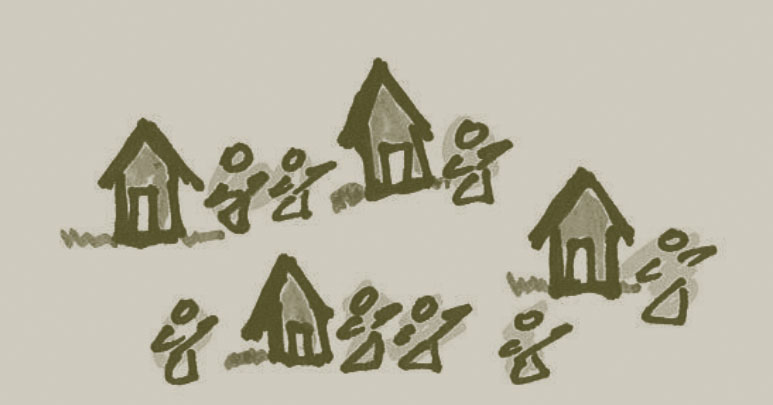

Principles
• Popular education places priority on the poor, oppressed and marginalized. It is aimed at accompanying these groups through the process of reaching a deeper understanding of their power to change their conditions of oppression

Tips
• Understanding and flexibility is very important when doing this work
References
• The Theory Behind Our Work booklet
• The Glossary
• How to Make it Work I
Popular Education Poster
Who is a Cultural Organizer?
This tool list the abilities of a cultural organizer and provide ideas for identifying, recruiting and engaging groups of people in cultural organizing.
What Makes a Good Cultural Organizer?
A cultural organizer is someone who:
• Is committed to community work and collaborative processes
• Listens to the concerns and dreams of the community
• Understands the daily issues in the community and also
has a larger vision
• Makes links and connections between people, places and organizations
• Makes sure that the issues of the community are addressed
• Brings people together
• Knows how to build relationships in the community
• Understands the cultural patterns and understandings
of their community
• Comes from a diverse cultural background, believes in
collective learning and social change, and is committed
to making a more just and democratic society
• Has understanding of the economic, political and social
impacts that have shaped the immigrant and refugee communities
• Shares cultural organizing values and principles
Profile of a Cultural Organizer
Brenda Ordaz was born in Ensenada, Baja California, Mexico. The daughter of Zapoteco farmworkers, she was constantly on the move as a child until settling in Madera, Calif. at the age of 11. Besides attending college and working as an organizer for the Coalition for Human Immigrant Rights of Los Angeles, Brenda is also a committed cultural promoter. She spearheaded a youth dance ensemble to perform at the Fiesta del Pueblo, a yearly event in celebration of San Juan, the saint of her hometown. The Fiesta del Pueblo is not only a religious ceremony, but also the time of the year in which Zapotecos living in Madera have a space to play music, dance and display their art, culture and food. Brenda believes that this event gives a sense of belonging for youth and children of immigrants. She also wrote and performed in “The Fandango Zapoteco,” a play representing a traditional wedding.
By attending and organizing cultural events, Brenda has discovered the great needs and the organizing potential of the Zapoteco community.
During her time in the Tamejavi Cultural Organizing Fellowship Program (TCOFP), Brenda learned about cultural organizing practices by forming a learning group. She identified six people from her community and invited them to be part of her group. After the initial meeting in which she shared with them about her role as a TCOFP fellow and what their role in her learning group would be, she involved them in her community assessment and cultural inventory. The group later used what they learned to present a play telling the story of migration in her community. As a cultural organizer, Brenda was in charge of all the group’s meetings and activities while supporting their involvement and being receptive to their needs. At the end of her fellowship, she facilitated follow-up meetings in which group members shared what they learned about creating a space for their community to tell a story in their own voices.
“I want to plant a seed that will help my fellow immigrants develop a feeling of belonging, creating a strong sense of identity and personal strength to help them act on the issues that affect their lives.”
Brenda Ordaz
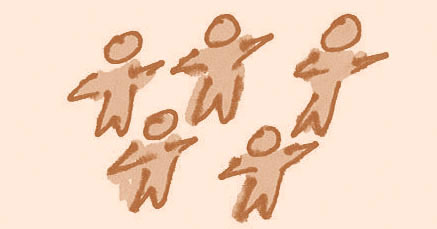

Principles
• Creating a space for the expression and reproduction of indigenous artistic and cultural knowledge is a decolonization step
• Cultural organizing is a collective process that works with groups, not just individuals
• Popular participation in cultural production is integral to community life and civic engagement around the world
Tips
• Be connected to the community
• Build community trust
• Have time, commitment and passion to engage in activities and follow through on the work agreed upon
References
• The Theory Behind Our Work booklet
• Learning Groups tools
• TCOFP tools
Cultural Organizer Vignettes
This tool shares profiles of cultural organizers that participated in the Tamejavi Cultural Organizing Fellowship Program (TCOFP).
Pov M. Xyooj was born in Long Beach, Calif. His parents are Hmong refugees who were sponsored to come to the United States from a Thai refugee camp through his mother’s father. He is the first in his family to be born in the U.S., and became the first to graduate from a four-year university when he earned a B.S. in physics and a minor in Asian American studies from UCLA. While in college, he was involved in several Asian student organizations, including Vietnamese, Japanese, Korean, Filipino and Hmong associations. Pov moved back to Fresno, where his parents live, after college and immediately started building connections with local Asian student organizations and community leaders. Through this work, Pov is not only reconnecting with his cultural roots and immersing himself in the Hmong community, he is taking action to redefine his identity by composing and performing bilingual hip-hop music and reclaiming his original Hmong family name.
Silvia Rojas is a native of Santiago Tiño Mixtepec, Oaxaca, Mexico who came to the United States in 1992 at the age of 17. Silvia speaks her native Mixteco, Spanish, and understands some English. Like many other women from low-income immigrant families, Silvia assumed major social responsibilities from a very young age, including running her hometown medical clinic at the age of 13. Since moving to the U.S., Silvia has worked in agriculture, harvesting onions, garlic and strawberries. Now married and the mother of two boys and three girls, Sylvia no longer works in the fields and dedicates much of her time to community work. Besides her commitment to motherhood and community organizing, Silvia loves dancing and has participated in the traditional dance group Se’e Savi in Madera, Calif. As her commitment to the dance group’s community work grew, she became a member of Se’e Savi’s organizing committee. In 2006, Silvia was invited to participate in a project called Naaxini (leader) where she learned to be a health leader to help the indigenous immigrant community.
“Ultimately, cultural organizing utilizes culture and art as a venue and resource for strengthening immigrant leadership and building a sense of place and belonging that inspires and promotes active participation in public life.”
Juan Santiago
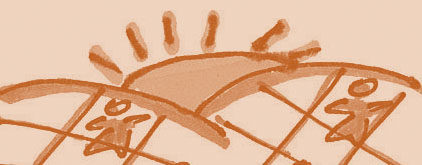

Principles
• We give people the tools they need to make changes in their communities
Tips
• To be a cultural organizer, you must be willing to invest time and have a special interest in the cultural vitality of the community
References
• The Theory Behind Our Work booklet
• TCOFP tools
Graphic Facilitating
Graphic facilitating has been a tool since the early years of the Pan-Valley Institute’s inception.
In this tool, we share an example of a poster developed to describe the steps of a cultural organizing process and the journey cultural organizers take to reach a vision. In the clouds, we describe the intention of cultural activities, the boat indicates the cultural organizers embarking on their journey and the different steps they take to reach their vision, along with the obstacles they face. It includes the people they meet and bring together in the process and the different events they organize before the culmination of the journey.
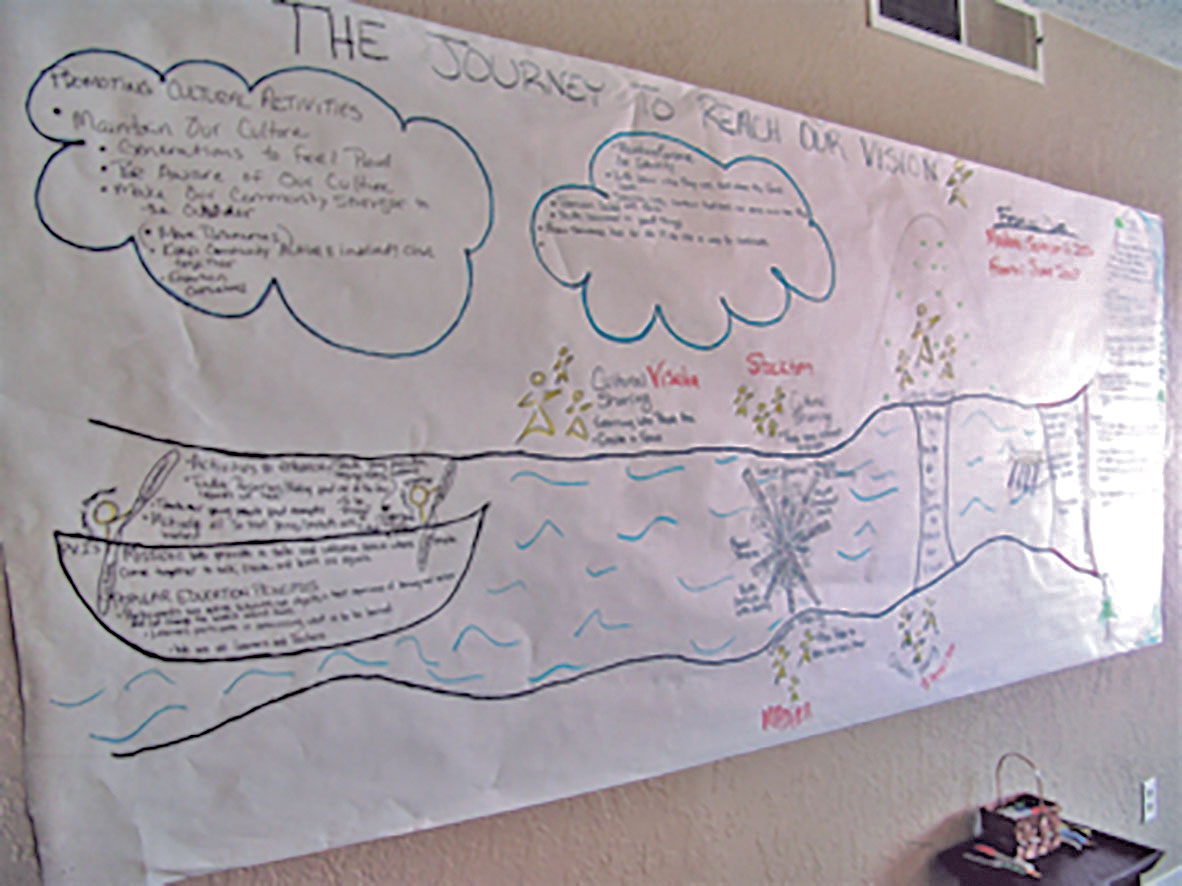
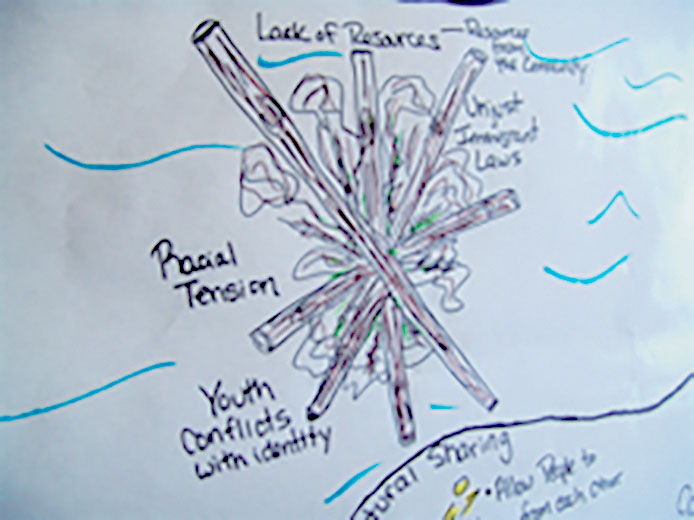
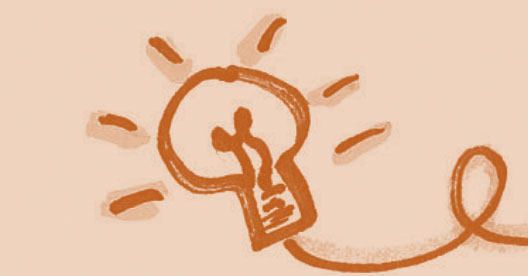

Principles
• There are no set formulas; by encouraging diverse participants to design cultural and art series, festival and other cultural sharing events, something new is created each time and learning is created each time
Tips
• Be creative, as creativity is the key to this process
• Develop your own approaches
References
• The Theory Behind Our Work booklet
• How to Facilitate the Popular Education Process Tool
• The Practitioner’s Role in Popular Education Tool
What is a Learning Group?
This tool will provide information about what constitutes a learning group and learning group principles.
In the summer of 2001, a committee of the Pan-Valley Institute (PVI) staff, Central Valley Partnership for Citizenship (CVP), and members of the Civic Action Network (CAN) conceived the idea to design a festival that used cultural expression and the arts to bring immigrant communities into the public square, create a forum for their voices, and encourage civic engagement. The first Tamejavi Festival demonstrated that intercultural learning can play an important role in creating relationships built on trust, collective knowledge, and public voice in order to build stronger communities and increase civic engagement.
To continue this process, the idea of forming learning groups came about with the intention of engaging immigrant and non-immigrant communities in intercultural learning. For the second Tamejavi Festival that took place in 2004, we formed different groups based on different media or artistic skills. We had a documentation learning group, theater learning group, youth learning group and a women’s learning group, with each group in charge of their component of the festival. This became an effective approach because it was a collective process that decentralized the organizing of event, and it helped group members contribute their existing knowledge while continuing to increase their knowledge and skills.
For our Tamejavi Cultural Organizing Fellowship Program (TCOFP), this idea of forming learning groups was an effective approach because it extended the fellows’ opportunities to others in their communities. The exercise helped fellows demonstrate their convening capacity and ability to engage people in a collective learning process. Fellows who did not form a learning group learned that they had to do most of the work themselves and did not create a collective process.
How Do Learning Groups Work?
One person from each group is appointed as cultural organizer, or head of the group. This person is responsible for engaging the group in activities and keeping them organized and updated on current events. Each learning group will meet on a consistent basis and engage in self-initiated activities, meaning that each group will hold these activities on their own. For example, the Dance Learning Group may want to plan an evening where the Folkloric, Hmong and Cambodian dancers come together to learn one another’s dance routines, and most importantly, discuss the cultural significance of the dances.
What is the Goal of Each Learning Group?
Throughout the process of engaging in self-initiated activities and meetings, each learning group will create a Collaborative Learning Project that will reflect a merging of the different cultures within that group. For example, the Dance Learning Group may decide to create a dance routine that incorporates styles of Folkloric, Hmong and Cambodian dance while also reflecting transformations of the style through the immigrant experience.
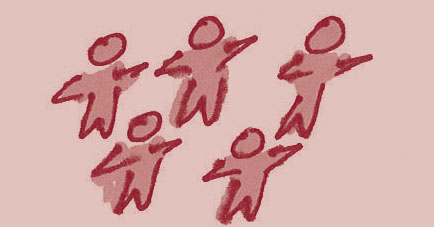

Principles
• Creating a safe learning space takes patience and is important when convening diverse groups

Tips
• When recruiting members for learning groups, if the first thing you hear from a person is that they are too busy, it is an indication that he or she may not be an effective member
References
• The Theory Behind Our Work Tool
• Who is a Cultural Organizer? Tool
• TCOFP Tool
• Glossary
Learning Group Principles and the Roles
and Characteristics of Members
This tool provides learning group principles and information on the roles and characteristics of effective learning group members.
Learning Group Principles
• Enrich Community Cultural Life: Learning groups promote understanding and appreciation of cultural diversity.
• Build and Promote Civic Engagement: By dignifying cultural background and opening spaces for cultural expression, learning groups allow participants to develop a sense of community belonging.
• Build Local Capacity: Learning groups promote alliances with community stakeholders and professional resources.
• Encourage Diverse Collaboration: Learning groups nurture a diverse environment that allows groups and people of different ethnic backgrounds to come together and collaborate on a unified project.
• Thematically Focused: Learning groups focus on centralized themes, allowing for commonality and cohesion between group members.
• Promote Art and Culture: Learning groups foster appreciation of the arts while also cultivating cultural awareness.
• Uphold Values of Learning: Learning groups maintain that the process of learning is continual; we are always teaching one another so that we are always learning from one another in return
Learning Group Members Roles and Characteristics
The learning group is crucial to the development and decision-making process of the Tamejavi Cultural Organizing Fellowship Program (TCOFP). We have learned that effective learning group members have the following roles and characteristics:
• Share the importance of art and culture as venues for organizing and community building
• Believe in collective learning and social change, and are committed to making their community a more just and democratic place
• Do outreach work in their community by engaging community members in a learning process, assisting their community in developing forms of arts and cultural expression for the public presentation, and by building audiences for the presentation
• Attend monthly mandatory meetings
• Engage in cultural organizing and activities and follow through on work agreed upon
• Recruit volunteers for public presentations and/or recruit sponsors and donations


Principles
• Start from people’s own experiences
• People work collectively (in groups), share experiences, and encourage participation

Tips
• Have a recruitment criteria
• Members should be interested and committed
• Never force anyone to be part of a learning group
References
• The Theory Behind Our Work Tool
• Glossary
• TCOFP Tools
Learning Group Formation
This tool provides steps for the formation of a learning group.
Who Should You Invite?
Invite a solid team of allies that will engage with you in planning, assessing and reflecting about all aspects of your cultural organizing work. They should also be willing to involve other community people in cultural organizing.
Recruitment
• Recruit people who have a sense of community and are engaged and interested in organizing for social change.Be gender, age and educational level inclusive.
• The learning group should be as representative of the community as possible.
• Learning group members should have connections to the key community people you will need to inform and/or ask for further information, advice and help from as the program moves forward.
• Choose members who are comfortable working as a team. Avoid those who feel so “expert” or educated that they will likely tell the others what to think or do.
• When recruiting a team member, explain your role as a cultural organizer and popular educator who has taken on the responsibility to facilitate the effort and make sure things are moving forward.
• When recruiting a team member, explain why you are approaching them to engage with you in a cultural organizing process.
How Many Members Should Be in a Learning Group?
You should include five or hopefully more community members who want to volunteer their time because they share your vision, are interested in building robust communities, and are excited about doing cultural organizing work.
The number of people in a group has great influence over the group dynamics. For interactive processes and nurturing collective leadership, smaller groups are recommended. When the group is too big, there are fewer opportunities for each person to share and participants tend to lose focus.
Success Story
When participating in the Tamejavi Cultural Organizing Fellowship Program (TCOFP), Cher Teng Yang (also known as Bee Yang) formed a multigenerational and gender diverse group of Hmong youth and adults who were involved in art and cultural activities within the Hmong community. Cher Teng Yang’s group was very effective because most of its members shared a common interest and had a deep understanding of the importance of art and cultural expression. It also helped that Cher Teng Yang is a cultural holder and well-respected member of his community. Throughout the fellowship program, they met regularly and worked well together, resulting in the presentation of a beautiful and well-organized event.


Principles
• Start from people’s own experiences
• People work collectively (in groups), share experiences, and encourage participation

Tips
• Have a recruitment criteria
• Members should be interested and committed
• Never force anyone to be part of a learning group
References
• The Theory Behind Our Work Tool
• Glossary
• TCOFP Tools
Building A Shared Agenda:
Relationship Building
The process of setting a shared agenda is essential for building meaningful relationships that lead a group to engage in collective action. This tool will explain what that process can look like.
Sharing an agenda is one of the key steps in groups formation as it helps the group have a clear understanding of the following: who are the members of the group; the skills and knowledge each member brings to the group; the ground rules that will guide the group; goals and motivations for engaging in an action; and projects and problems that most concern the group.
A shared agenda has five components:
1. Relationship building, allowing group members to get to know each other
2. Establishing group ground rules and guidelines
3. Identifying group assets and the skills each member brings to group
4. Establishing group goals and objectives; what would the group like to accomplish?
5. Identifying specific issues of concern to the entire group
Relationship Building
After you have recruited members of your learning group, the first time you come together is an excellent opportunity to do an exercise that allows all members to introduce themselves. This can be done using different activities like the Tree of Life, a story circle or any other activity you can think of. Here is an example.
Starting with Ourselves Activity
Objective: to provide the group the opportunity to learn about one another. Time: 1 hour
1. Instructions, 3 minutes
Draw a picture of yourself that maps out your own perspectives and experiences using imagery that best represents your life. Provide only information you want to share at this time with a group of people you are meeting for the first time.
2. Answering questions, 40 minutes
Center of the body – what is at the core of the lifework you aim to participate in?
Eyes – what are the injustices or experiences you find yourself observing or living?
Feet – what are the main events and experiences that shaped your life so far?
Backbone – what gives you strength?
Arms – share a story about the main people who have affected your life, then share a story about people whose lives you’ve touched.
Head – what are the main ideas or realizations that guide your life and work?
Environment – have you ever taken a stand on an important issue?
3. Sharing, 10 minutes each


Principles
• The learning has to be relevant. We do not have curriculum because each group has to decide what they want to learn.
• People are more motivated/interested in organizing around issues that are relevant to them.

Tips
• It takes time for a group to get to get to know each other; this doesn’t happen with one activity
• Allow informal time for people to get to know each other
References
• The Theory Behind Our Work Tool
• Glossary
• Convening Learning Groups tools
• Popular Education Section How to Make it Work I
Building a Shared Agenda: Group Ground Rules, Guidelines & Assets
Group Ground Rules & Guidelines
The second step for building a shared agenda is to establish ground rules and guidelines under which the group will operate.
Think about and agree upon guidelines needed in order for the group to feel comfortable working and learning together.
When working with the group, try to remember the best and worst learning experiences you have had working with a group. These could be from school, community organizing, staff training or some other formal or informal situation when you were hoping to learn something or collaborate on an action or project.
Based on these experiences, what group guidelines would you suggest in helping the group create the kind of learning setting in which everyone feels comfortable and respected?
Use those suggestions to draw up a set of guidelines that everyone can agree to. For example:
• A safe, comfortable, democratic atmosphere in which everyone can learn and contribute freely Open mind, open heart
• Everyone is expected to respect and value each other’s point of view
• Establish open communication with one another
• Respect each other’s culture without judgement
• Have an open mind and willingness to learn from everyone
• Everyone should communicate and listen to one another
• Open mind, open heart
These are just examples; your group has to decide on their own guidelines.
Group Assets
This section of the shared agenda allows you to explore the skills, knowledge and expertise that each participant brings to the group. Spend time thinking about the knowledge, expertise and skills you have, whether they are cultural, artistic, etc. Don’t list only academic skills, but also knowledge you have gained and expertise you have acquired from your parents, elders and others. Consider the following:
• The main knowledge I hold is…
• I have expertise in…
• I am talented and skillful at…


Principles
• Necessary to value knowledge, experience of all people. Everybody has knowledge, everybody brings something to the table. Start with what people already have.

Tips
• Allow time and space for all to contribute to the group guidelines
• Keep the guidelines visible at all meetings
References
• The Theory Behind Our Work Tool
• Glossary
• Convening Learning Groups Section
Building a Shared Agenda: Group Intentions & Talking Points
This tool provides ideas for allowing the learning group to establish goals for being together, from each individual to the entire group.
Groups Intentions
During this session, you will:
• Explore what you hope to achieve individually as part of this group
• Explore what you hope your group will achieve together
• Agree on the group’s goals
• Consider how the group’s learning activities and other achievements can be evaluated
Spend time thinking about what you’d like to get out of the work you will be doing with the group. If possible, write it down or talk it through with someone else in the group first before getting into a group discussion about it. Try to think in terms of your overall intention and then list anything else you are personally hoping to gain or achieve.
Consider the following:
• My main intention in coming here is to…
• I would also like to…
Talking points
• Do we have similar reasons for being here?
• Do any members feel that their needs or expectations
can’t be met?
• If we had to agree on our overall aim or goal, what
would it be?
• Do we have a shared view of how we intend to get there?
• Can we list any other group objectives or goals?
• How do we intend to achieve them?
• How will we know where we’ve achieved these aims
and objectives?
• How will we evaluate what we’ve learned or achieved together?
• How can we make sure that we learn from any mistakes
as we go along?


Principles
• People are more interested/motivated in organizing around issues that are relevant to them

Tips
• This section is very important, and it’s fine if you need more than one meeting; don’t rush the process
• When the group is clear from the beginning as to why they came together and what they hope to accomplish, the group will be successful
References
• The Theory Behind Our Work Tool
• Glossary
• Convening Learning Groups Section
• Popular Education Section How to Make it Work I
What is Cultural Sharing?
This tool provides information about what cultural sharing events looks like, how they are structured, and the different forms they can take.
Definition of Cultural Sharing
Cultural sharings provide a space for people to come together across cultural lines to learn from one another while re-asserting their cultural traditions, meanings and voices to themselves and others. Doing so helps establish the sense of belonging and connection necessary for meaningful civic participation.
Why are Cultural Sharings Important?
Cultural sharings are a key strategy for building more inclusive communities in ethnically diverse places such as California’s Central Valley because they provide opportunities for community relationship-building through intercultural learning and awareness. Cultural sharings encourage first-hand learning, visiting one another’s communities, and building a safe, respectful cultural learning environment where people from all backgrounds feel welcome.
How are Cultural Sharings Structured?
Cultural sharings are one-day events that can take the form of a cultural kitchen, a bus tour, thematic sharings and dialogues, or story circles through artistic mediums such as photo exhibits, videos, and/or performances. They can also take the form of community visits by attending a traditional celebration, cultural center, community garden or a community tour.
FORMS OF CULTURAL SHARINGS
Cultural Kitchen: The cultural kitchen provides an opportunity to learn and listen to stories of how diverse cuisines make their way to Valley homes and markets.
Dialogues/Pláticas: We intentionally use the word platica because that is the atmosphere we would like to create. It is a space in which we invite experts to give a brief exposition on the topic of the platica to prompt a conversation in which all or most attendees participate, either by asking questions or adding to the conversation.
Thematic Cultural Sharing: An example could be around the theme of traditional medicine, folk tales, oral traditions, poetry, music, dance, or any other central theme.
Visiting Events: These provide an opportunity for first-hand learning by visiting one another’s culture and art events.
Success Story
On a hot summer morning, participants of the Tamejavi Cultural Organizing Fellowship Program (TCOFP) and members of the coordinating group were invited to an intimate cultural kitchen hosted by Cher Teng Yang (also known as Bee Yang), a TCOFP fellow and his family. He invited the group to his home to learn how to prepare egg rolls and traditional papaya salad. All participants had the opportunity for the hands-on experience of making egg rolls, which Cher Teng Yang explained are from China, but were adapted by the Southeast Asian community make the recipe their own. He shared that when there is a big family event in the Hmong community, everyone has a role to play in preparing food for the entire family. Cooking together is seen as passing on culinary traditions, especially to the younger generations. Cher Teng Yang also gave participants a tour of his garden while sharing stories of his family life back in Laos. He further explained how his family finds ways to recreate important traditions as they learn new cultural practices.
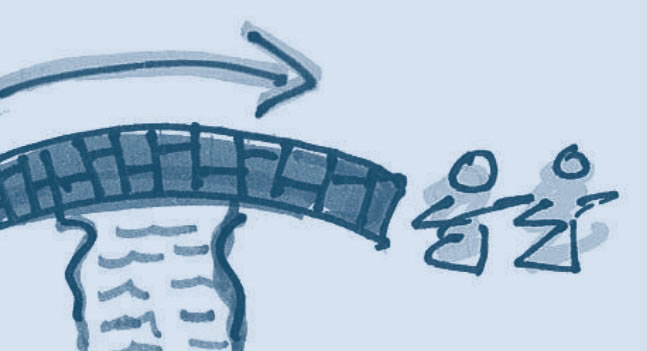

Principles
• Provide a welcoming learning space
• Provide safe space where people can share life experiences
• Provide space for deeper cultural diversity insights and knowledge
• Offer space for socially excluded communities to share their cultural history and traditions in their own voices

Tips
• We recommend bringing a small group of participants to allow dialogue, interaction and opportunities for deeper learning
References
• The Theory Behind Our Work booklet
• Glossary
• Cultural Sharing Section
• Popular Education Section How to Make it Work I
Convening a Cultural Sharing
This tool provides the steps for convening a cultural sharing, as well as some protocols to consider.
Purpose: To create an intentional and meaningful space for cultural exchange and building cross-cultural relationships.
STEPS FOR CONVENING A CULTURAL SHARING
1. Convene a meeting with your learning, planning or coordinating group to decide if and why the time is right to facilitate a cultural sharing
2. The group should decide what they want the event to accomplish; identify the central focus of the cultural sharing, including the short and long-term impacts and changes you would like to see result from the event
3. Decide the kind of cultural sharing that will be most suitable for accomplishing the group’s goals
4. Contextualize your cultural sharing within the present social and political climate related to immigrants and refugees or other groups involved.
5. Create a theme/title for your cultural sharing; the title is the key message, not just a name
6. Conceptualize your cultural sharing as a strategy for building cross-cultural relationships and ties of solidarity for working together to address issues of interest to the immigrant communities in your area
7. Make a list of who you would like to include in the cultural sharing and the various organizer and volunteer roles
8. Develop an outreach plan
9. Be mindful of the artistic component, as this is a key element of cultural sharings
10. Identify the artist, cultural holders or story tellers for your cultural sharing
11. Generate a general planning document that includes a detailed logistical list and tentative program flow
CULTURAL SHARINGS PROTOCOLS
• Value the fact that a community is willing to share their culture, and be mindful and respectful
• Cultural sharings are not parties or events, but intimate gatherings among diverse cultures with the sole intent of learning from each other and building relationships
• Learn about the protocols of the community you are visiting and keep them in mind throughout your visit
• Entering into a community has to be facilitated by a member that has deep cultural knowledge and community trust
• When visiting another community, come with an open mind and heart; leave all prejudices and preconceptions aside, or come prepared to challenge those prejudices
• Have an attitude of mutual exchange, meaning that if you want people to learn about your community, you need to be open to learning about their community, including tasting their food
• There has to be a certain level of trust within the group
• Do not extend the invitation to others without first consulting the organizers of the gathering, and avoid bringing people who want to visit an “ethnic” community for their own benefit
• Ask if you can take photos before doing so as this is not a photo opportunity, but a learning opportunity
• Cultural ceremonies and faith practices require special guidelines and preparation before attending


Principles
• There are no set formulas: by encouraging diverse participants to design gatherings and festivals, something is created each time and learning occurs along the way
• Creating a safe space takes patience and is important when convening diverse groups

Tips
• Tips are included in the tool
References
• The Theory Behind Our Work booklet
• Glossary
• Cultural Sharing Section
• Tamejavi Festival Section
Cultural Kitchen: Who’s at the Table?
This tool provides information on what a cultural kitchen is and the steps to take when organizing one.
Background: The cultural kitchen concept initially began in the late 1990s and early 2000s with the Pan-Valley Institute’s women’s group, but wasn’t well defined until the second Tamejavi Festival in 2004. As a pre-festival event, cultural organizers would gather and share dishes that were significant in their communities as a way to build new relationships and trust among the group.
Purpose: The cultural kitchen provides space to explore cultural identity through traditional dishes from diverse communities and allows for dialogue around food to redefine what “gourmet” means. The cultural kitchen presents immigrant cuisines from the chefs and entrepreneurs emerging from immigrant communities and displays how the U.S. is gaining new flavors, adding to an already rich cultural diversity.
Definition: The cultural kitchen provides an opportunity to learn and listen to stories of how diverse cuisines make their way to homes and markets. This cultural space will activate participants’ senses while they enjoy the aromas and flavors of different herbs, spices and crops. It serves as an exercise to strengthen multiethnic relationships by learning about the common migration journeys of people who carry with them their cultural practices.
Creating Space for a Cultural Kitchen: Ask each participant (chef) to come prepared with a traditional dish they would like to share, specifying that it should have special meaning to them and/or their community. During the cultural kitchen, there will be stations assigned to each chef.
Aesthetics: Encourage each chef to design and curate their space by displaying ingredients they use for their meal, as well as traditional utensils they use for cooking and serving.
Sharing: The facilitator will begin the presentation by going from station to station. Some questions the chefs should be prepared to answer could include:
• Talk about the ingredients and nutritional value of your dish.
• Are the ingredients easy to find here; how do you get access to them?
• How did you learn to cook what you will be sharing?
• How long does it take to prepare? Is it prepared only for special occasions?
• Have you modified the dish since arriving to the U.S.?
• Share a story associated with your dish.
• Talk about the cultural meaning of your traditional kitchen utensils and tableware.
Success Story: In May 2006, cultural organizer Rosa Lopez, along with other community members, organized “Our Cultural Kitchen,” inviting diverse indigenous communities from Madera, Calif. The groups who participated were from the Zapoteco, Mixteco, Otomi and Purepecha communities. The cultural sharing engaged many people, especially youth.
During the cultural kitchen, participants created a space where they shared a dish significant to their cultural identity and community. Organizers hoped that through the cultural kitchen, non-indigenous people would have a better understanding of how they contribute to the Central Valley. They felt that by sharing their culinary expertise, it would share a message of cultural pride and honor the traditions they hope to pass on to future generations. As part of the cultural kitchen, there was a photo exhibit that illustrated the contributions of farmworkers.
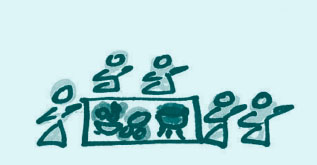

Principles
• There are no set formulas: by encouraging diverse participants to design gatherings and festivals, something is created each time and learning occurs along the way
• Creating a safe space takes patience and is important when convening diverse groups

Tips
• Make sure you have an estimate of attendees prior to the cultural kitchen so the chefs know how much food to prepare
• Choose a location that can accommodate a cultural kitchen
• Ask the chefs to arrive two hours early to set up their stations
References
• The Theory Behind Our Work booklet
• Glossary
• Cultural Sharing Section
• Tamejavi Section
Central Valley Bus Tour
This tool illustrates an example of a cultural sharing learning activity that took place in the form of a bus tour through California’s Central Valley.
Background:
The Central Valley Bus Tour was created for the Civic Action Network (CAN), a small grantee program of the former Central Valley Partnership for Citizenship. CAN was formed by grassroots non-profit organizations from throughout the Central Valley, and organizers thought a bus tour would provide a unique opportunity for South Valley CAN members to visit organizations in the North Valley, and vice versa. The intent was to help them learn and understand more about one another’s communities by experiencing them firsthand.
Story:
CAN participants from the south and central areas of the Valley gathered at the Tower Theater in Fresno to embark on a trip to visit North Valley CAN members for a day of collective sharing and learning. To get things started, eight local poets and musicians, complete with journals and a sparse assortment of instruments, began tackling (through words) a wide array of social issues.
First Stop: Fresno Metro Ministries
Started in 1970, Fresno Metro Ministries focuses on relationship building within the community. They are a faith-based organization that works to create a more respectful, compassionate and inclusive community that promotes social and economic justice.
Bus Ride
As the bus traveled through the Valley via Highway 99, Professor Isao Fujimoto acted as tour guide and shared various facts about the Central Valley. He pointed to signs indicating where Japanese concentration camps were located during World War II, explaining that concentration camps were easily made; all that was needed was a racetrack or fairgrounds and some barbed wire to create a confined territory.
Second Stop: Portuguese Education Foundation of Central California,
TurlockIn Turlock, we met with Elmano Costa and Fatima Fontes, coordinators of VALER and the Portuguese Education Foundation of Central California. VALER helps the community by figuring out what services a person needs and helping them fill out the forms necessary to get those services.
Final Stop: COPAL:
The C.O.P.A.L. program started two years ago. It teaches young people about the importance of things passed on from indigenous communities.
Conclusion:
Professor Isao Fujimoto ended the evening by inviting the group to look at a map of the Central Valley and asked that they remember the purpose of the tour: “Don’t take anything for granted, look further, and ask questions.”
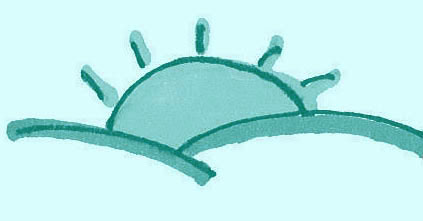

Principles
• There are no set formulas: by encouraging diverse participants to design gatherings and festivals, something is created each time and learning occurs along the way
• Creating a safe space takes patience and is important when convening diverse groups

Tips
• Know beforehand how many people will be participating to help plan for food and transportation logistics
• Choose destinations that can accommodate the whole group
• Ask all participants to arrive 30 minutes before scheduled departure
References
• The Theory Behind Our Work booklet
• Glossary
• Cultural Sharing Section
• Tamejavi Festival Section
INTRODUCTION
What is Tamejavi?
A word inspired by the creative antics of poet Juan Felipe Herrera, “Tamejavi” brings together syllables from the Hmong, Spanish and Mixteco words for marketplace: TAj laj Tshav Puam (Hmong), MErcado (Spanish) and nunJAVI (Mixteco). The combined syllables spell Tamejavi, representing a public place for the Central Valley’s diverse immigrant and refugee communities to gather, engage in cultural sharing and celebrate their work through building a sense of place and belonging.
WHAT DOES TAMEJAVI STRIVE TO ACHIEVE?
• Amplify the voices and increase pride of immigrant communities.
• Build new relationships and understanding across immigrant cultures and with other Valley residents who share a commitment to increasing civic participation and public recognition for diverse communities.
• Create a public space for creative expression that fosters civic engagement.
• Strengthen skills and build models for civic engagement through cultural sharing.
TAMEJAVI ORGANIZING PRINCIPLES
1. Popular participation in cultural production is integral to community life and civic engagement around the world.
2. Tamejavi activities grow organically from and are democratically organized by members of the Pan-Valley Institute, Tamejavi Cultural Organizing Fellowship Program fellows, learning groups, partners and interested Valley communities.
3. There are no set formulas: by encouraging diverse participants to design gatherings and festivals, something new is created each time and learning occurs along the way.
4. Creating a safe learning space takes patience and is important when convening diverse groups.
5. Multi-lingual and broad-based communication strategies are important to engaging diverse communities.
6. Attracting diverse audiences is as important as presenting multiple forms of expression.
7. Tamejavi both incorporates learning from experienced artists, presenters and cultural workers and believes that participating groups have the capacity to make decisions about the direction and presentation of their work.
8. Increasing access to public space for cultural expression is key.
9. Cultural exchange is about doing and learning; it is not passive spectatorship.
10. When combined, cultural exchange and community organizing increase the impact of local efforts to improve Valley communities and strengthen organizing networks.
Tamejavi is unlike other multi-cultural festivals and events
in several ways:
• Tamejavi is a daylong gathering to celebrate and experience the rich traditions of California’s Central Valley through visual and performing arts that is free to the public.
• Tamejavi is an important event for the cultural vitality of this region. It’s developed by a year-round learning community comprised of youth and elders, artists and organizers, chiefs and healers, educators and students.
• Tamejavi is designed to specifically foster meaningful civic engagement by immigrants with the established community. It provides a public space for immigrants to re-create the sense of community they experienced in their home countries and, in doing this, to build a sense of their own place.
• Tamejavi shares rich traditions in multiple cultural groups across cultures, experiences and languages. There is virtually no other place in America where you could find a traditional Mixtec singer followed on-stage by a Hmong spoken word artist.
“I want to plant a seed that will help my fellow immigrants develop a feeling of belonging, creating a strong sense of identity and personal strength to help them act on the issues that affect their lives.”
Brenda Ordaz
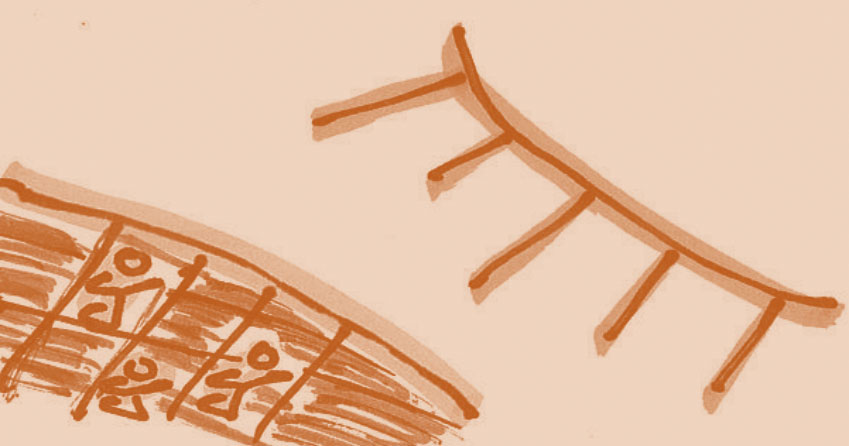

Principles
• Principles are included in tool
Tips
• Tamejavi is not just an event; it is a learning and cultural exchange process
• Tamejavi challenges and presents a new definition
of what art is
References
• The Theory Behind Our Work booklet
• Glossary
• Learning Groups Section
• Tamejavi Cultural Organizing Fellowship Program Section
• Popular Education Section How to Make it Work I
What is a Learning Group?
This tool will provide information about what constitutes a learning group and learning group principles.
In the summer of 2001, a committee of the Pan-Valley Institute (PVI) staff, Central Valley Partnership for Citizenship (CVP), and members of the Civic Action Network (CAN) conceived the idea to design a festival that used cultural expression and the arts to bring immigrant communities into the public square, create a forum for their voices, and encourage civic engagement. The first Tamejavi Festival demonstrated that intercultural learning can play an important role in creating relationships built on trust, collective knowledge, and public voice in order to build stronger communities and increase civic engagement.
To continue this process, the idea of forming learning groups came about with the intention of engaging immigrant and non-immigrant communities in intercultural learning. For the second Tamejavi Festival that took place in 2004, we formed different groups based on different media or artistic skills. We had a documentation learning group, theater learning group, youth learning group and a women’s learning group, with each group in charge of their component of the festival. This became an effective approach because it was a collective process that decentralized the organizing of event, and it helped group members contribute their existing knowledge while continuing to increase their knowledge and skills.
For our Tamejavi Cultural Organizing Fellowship Program (TCOFP), this idea of forming learning groups was an effective approach because it extended the fellows’ opportunities to others in their communities. The exercise helped fellows demonstrate their convening capacity and ability to engage people in a collective learning process. Fellows who did not form a learning group learned that they had to do most of the work themselves and did not create a collective process.
How Do Learning Groups Work?
One person from each group is appointed as cultural organizer, or head of the group. This person is responsible for engaging the group in activities and keeping them organized and updated on current events. Each learning group will meet on a consistent basis and engage in self-initiated activities, meaning that each group will hold these activities on their own. For example, the Dance Learning Group may want to plan an evening where the Folkloric, Hmong and Cambodian dancers come together to learn one another’s dance routines, and most importantly, discuss the cultural significance of the dances.
What is the Goal of Each Learning Group?
Throughout the process of engaging in self-initiated activities and meetings, each learning group will create a Collaborative Learning Project that will reflect a merging of the different cultures within that group. For example, the Dance Learning Group may decide to create a dance routine that incorporates styles of Folkloric, Hmong and Cambodian dance while also reflecting transformations of the style through the immigrant experience.
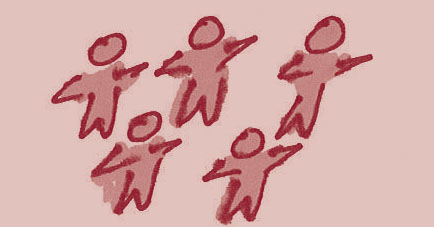

Principles
• Creating a safe learning space takes patience and is important when convening diverse groups

Tips
• When recruiting members for learning groups, if the first thing you hear from a person is that they are too busy, it is an indication that he or she may not be an effective member
References
• The Theory Behind Our Work Tool
• Who is a Cultural Organizer? Tool
• TCOFP Tool
• Glossary
INTRODUCTION
Tamejavi Coordinating Group/Planning Committee
This tool provides information on the role of a coordinating group/planning committee, and tips for recruiting committee members.
The Planning Committee’s Role
The Tamejavi Planning Committee is crucial to guaranteeing a collective process. This group also plays an important role in the planning, shaping and decision-making process of the event. The committee is formed of individuals representing one or more of the communities that constitute the base of Tamejavi. The principles of the committee and the roles of members are as follows:
• Members share Tamejavi values and principles
• Members believe in the importance of art and culture as tools for organizing and community development
• Members come from diverse cultural backgrounds, believe in collective learning and social change, and are committed to making the Central Valley a more just and democratic place
• Members make links and connections between people, places and organizations
• Members do outreach work in their community:
≈ by engaging community members in the Tamejavi learning process;
≈ by assisting their community in developing forms of arts
and cultural expression for the festival;
≈ and by building audiences for the festival.
• Members attend mandatory monthly meetings
• Members engage in Tamejavi activities and follow through on work agreed upon
• Members can recruit volunteers, register people in workshops/forums, and/or recruit sponsors and donations
• Members provide feedback on festival design
Recruitment Tips
• Recruit people who have a sense of community
• Reach out across gender, and people fron varied ages and educational levels
• Choose members who are comfortable working as a team
• When recruiting a team member, explain why you are approaching them to engage in a cultural organizing process as part of the planning committee
• Clearly explain the role of the planning committee
• Be up front about the time commitment
Success Story
Throughout the planning of various Tamejavi Festivals, there were those who were with us from the first festival in 2002 to the fifth festival in 2009. However, for each festival, there were new people who joined the committee. The group was always culturally diverse, multigenerational and each member had a different set of skills and played different roles. For example, the committee for the 2009 festival was formed by a member of the Iranian community who is a librarian and two members of the Native American community–one a musician and the other a muralist. One member that participated since the second festival played a key role in providing technical and curating support. Two of the members provided support with communication and documentation. There was a graphic designer and a person in charge of coordinating volunteers. Aside from the tasks they were assigned according to their skills, committee members were also influential in deciding on a theme, shaping the festival, outreach and promotion.
“I want to plant a seed that will help my fellow immigrants develop a feeling of belonging, creating a strong sense of identity and personal strength to help them act on the issues that affect their lives.”
Brenda Ordaz


Principles
• Principles are included in tool
Tips
• Tamejavi is not just an event; it is a learning and cultural exchange process
• Tamejavi challenges and presents a new definition
of what art is
References
• The Theory Behind Our Work booklet
• Glossary
• Learning Groups Section
• Tamejavi Cultural Organizing Fellowship Program Section
• Popular Education Section How to Make it Work I
EVENT PRODUCTION
The Importance of Crafting the Theme
of an Event
In this tool, we share what we have learned about the importance of crafting a theme when planning an event or campaign and what is implied in the process. This advice is based on what we have learned from organizing five Tamejavi Festivals and other cultural and creative expression events.
The event’s theme provides many opportunities for establishing a process for reaching a shared vision and setting common outcomes the group’s organizers would like to achieve. The theme of your event or campaign should be the key message you communicate to let audiences know the intention of your work. It also provides the framework for your focus when designing campaign strategies and event activities. Finally, involving your group in selecting a theme is a great opportunity to unlock the creativities of each member of the group and help them work towards having ownership of the event/campaign.
At the Pan-Valley Institute, we are intentionally thorough when selecting a theme; we dedicate plenty of time, do not rush the process and make sure we consult not only the group that is involved in the project, but people outside the group as well. For example, “A Road to the Future” was the theme of a memory book project that a group of Mexican Indigenous and Hmong women collaborated on and used as a venue to tell their stories in 2003. The women who created this book were between the ages of just 18 and 22. Some were already exercising leadership skills, while others were in the process of learning how to be more involved in social justice issues, but wherever they were on their journey as young women, they were paving a road to their future. Some of those women have become strong leaders either as social justice activists, elected officials or business entrepreneurs.
STEPS TO CONSIDER WHEN CRAFTING A THEME:
1. Pressing Issue of the Moment
Our first step when planning an event, campaign or media project is to pose these questions: What is the issue you want to address through this event, campaign, project? What issue is impacting our communities at the moment; i.e. xenophobia, Islamophobia? Or is there an issue or story we want to reframe; i.e. do we want people to learn that women migrate not only as companions, but as heads of households?
2. Setting Goals
Once we identify the most pressing issue, we set the goals: Why are you doing this? What do you want to change, accomplish?
3. Who is Your Audience?
Who do you want to influence? Who are the people or groups of people that you want to reach?
Once you have discussed these three points, involve your group in crafting the theme. Start by selecting key words that you would like to see in the theme, then start building phrases with those key words. This should lead to selection of a theme that speaks not only to your group, but also to the people you want to influence. This process should be creative, participative and fun!
The initial theme of what is now known as the Tamejavi Festival was “Building Community Through Cultural Exchange,” and after a very creative process, it became Tamejavi. This word represented our main message of opening a space similar to the TAj laj Tshav Puam, MErcado, NunJAVI. It’s derived from Hmong, Spanish and Mixteco words, and represents the space we wanted to create: a marketplace where people gathered to exchange goods, produce, discuss town happenings, and expose their cultural and artistic creativity. TAMEJAVI also connotes the diversity of the Central Valley.
Other Tamejavi Festival themes: Sharing a Journey Celebrating Cultures and Connecting Voice; A Gathering of Indigenous Cultures; Hands that Forge History; and Our Voices, Our Stories: A Path to Inclusion
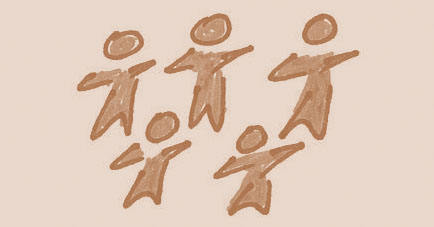

Principles
• Knowledge built informs and leads to addressing the pressing issues a community faces
• Action is presented to social change with political context
• Multilingual and broad-based communication strategies are important to engaging diverse communities
Tips
• Don’t rush the process; however, you must know your theme before you plan strategies or activities
• A theme can be a strong statement, but shouldn’t be a deterrent
• A theme should be short, ideally three or four words
References
• The Theory Behind Our Work booklet
• Glossary
• Communication and Documentation tools
• Tamejavi Festival Section
EVENT PRODUCTION
Shaping a Festival Program: Dream Big
This tool provides general steps for crafting the program that makes up your event.
The Tamejvi Festival program has included the following components: the blessing ceremony, outdoor marketplace, platicas, film series, and artistic presentations. The following steps provide guidelines for you to consider.
Steps for Shaping Your Program
1. Once your planning committee is in place, committee members must understand that they will play a key role in shaping the festival program in providing ideas, identifying artists and cultural holders, and contributing to the creative process.
2. One of the planning committee’s tasks will be to set the festival’s goals, intentions and outcomes: What do we want to accomplish? What do we want to communicate? What kind of impact do we want to have? The goals and intentions set by the group will help influence the event’s theme. This should be a creative process that, depending on the group, can take two or three meetings and should not be rushed. The theme will influence the message the festival conveys and set the framework for shaping the program.
3. Another important role of the program committee in shaping the program is that once there is a general sense of theme, they will have to go to their communities and identify cultural artists and assets they want to include in program.
4. Once committee members have identified these assets, they share them with their group and start listing potential presenters.
5. When identifying artists in a community, it’s important to share the program’s goals and objectives and to try to convince the artists not only to come as performers, but to share ownership of the process.
6. The process of shaping the program also includes a “Dream Big” session that consists of crafting a creative vision for the event.
7. Allowing this collective process to unfold in shaping the program results in planning committee members taking ownership of process.
8. Since the second Tamejavi Festival in 2004, we implemented pre-festival events that consisted of visiting events happening in the communities the committee members represented, or attending events organized by the planning committee with the intention of building an audience for the festival.
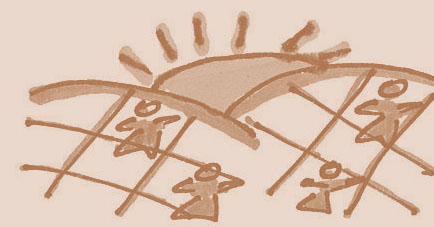

Principles
• Tamejavi incorporates learning from experienced artists, presenters and cultural workers, and believes that participating groups have the capacity to make decisions about the direction and presentation of their work
• There are no set formulas; by encouraging diverse participants to design gatherings and festivals, something new is created each time and learning occurs along
the way
Tips
• Committees should decide when and where to meet
• Try not to saturate the program
• This is a process; it takes time
• Be flexible as shaping a festival program comes with many changes
• Stay focused on the event’s theme
• Be open to people’s creativity
• The program may not be finalized until a few weeks before the event
References
• The Theory Behind Our Work booklet
• Glossary
• Popular Education Section How to Make it Work I
• Tamejavi Coordinating Group Tool
• The Importance of Crafting the Theme of an Event Tool
EVENT PRODUCTION
Example of a Tamejavi Festival Program
EXAMPLE
TAMEJAVI 2007 FESTIVALPROGRAM: HANDS THAT FORGE HISTORY
The theme of Tamejavi IV, “Hands That Forge History,” invites political leaders, the media, community organizations, and the general public to re-examine the basic principles upon which this nation was founded, “with liberty and justice for all,” by resisting the use of labels such as “terrorists” and “illegals” that divide our community and, instead, recognizing immigrants’ traditions, struggles and contributions to Valley life.
BLESSING 8:30–9:15 a.m.
Blessing: by Ron Alec (Mono Tribe)
Music and Dance by Lance Canales
We ask that all who attend be respectful as this is a sacred ceremony, not a performance.
PELOTA MIXTECA 10:15–11:00 a.m.
This is a game with roots in pre-Hispanic cultures played by Mixtecos at the ceremonial centers.
OPENING CEREMONY 12:00–1:00 p.m.
Outdoor Market Stage
Tou Ger Xiong, a Hmong artist and activist, and Rosa Lopez, a Mixteco cultural organizer and storyteller, will facilitate the opening ceremony. By connecting immigrants’ history to the present and looking forward to the future, the opening ceremony conveys that Tamejavi is about our history and struggle to end racism, discrimination and prejudice, and advance justice, equality, human rights, dignity and respect for all.
HISTORY LINE PERFORMANCES
ACT 1: Exclusions and Labor Demands
12:50 – 1:10 p.m.
CONTEXT
The 1924 Asian Exclusion Act prohibited all Chinese, Japanese, Koreans and Indians from immigrating to the United States. Also, by law, Asians could not become citizens, marry Caucasians, or own land. However, farms and canneries still needed inexpensive labor. Thousands of young, single Filipino males began migrating to the West Coast during the 1920s to fill this need. Immigration laws did not exclude Filipinos because they were U.S. nationals since the Philippines was a U.S. territory.
PERFORMANCES
1. Mga Anak Ng Bayan
A student-based Filipino dance troupe formed in 2006, inspired by the Sanpaguipa dance troupe from University of the Pacific. They will present two dances: Pandango Sa Ilaw, which portrays dancers carefully balancing candle lanterns, and Guaway Guaway, a dance that originated in the rice harvest in the Philippine countryside.
ACT 2: Arax
1:15 – 1:35 p.m.
CONTEXT
At the end of the 19th century the first Armenian communities began settling in the Central Valley, playing a critical role in the raisin industry, the largest in the world. Around this time, however, the darkest moments of Armenian history began—the Armenian Genocide of 1915 is known as the first modern, systematic genocide, with the massacre of more than one million Armenians. Today many Armenians call the Valley home, making their group one of the largest populations of Armenians outside Armenia.
PERFORMANCES
2. Arax Dance Group
Arax will present a set of traditional men and women’s Armenian folk dances practiced in the villages of Armenia and passed down through generations of immigrant families.
ACT 3: The Dust Bowl
1:35 – 2:30 p.m.
CONTEXT
The 1930s marked a particularly unstable time for the U.S., which was then experiencing the aftermath of the stock market crash and, consequently, the Great Depression. At the same time, American prairie lands were forced into use beyond their natural limits to capture the profits of World War I, causing a series of catastrophic agricultural events called the Dust Bowl. As a result, about 300,000 people from Oklahoma and Texas, including a group of African-Americans, migrated to the Valley and are now settled primarily in Bakersfield.
PERFORMANCES
1. Jan Goggans
An assistant professor in Literatures and Culture at the University of California, Merced, Jan Goggans has taught courses on the Great Depression and California literature. Goggans is currently completing a book titled “California on the Breadlines.” Jan will present visual, fictional and poetic responses to the great wave of migration to the state of California that occurred during the Great Depression.
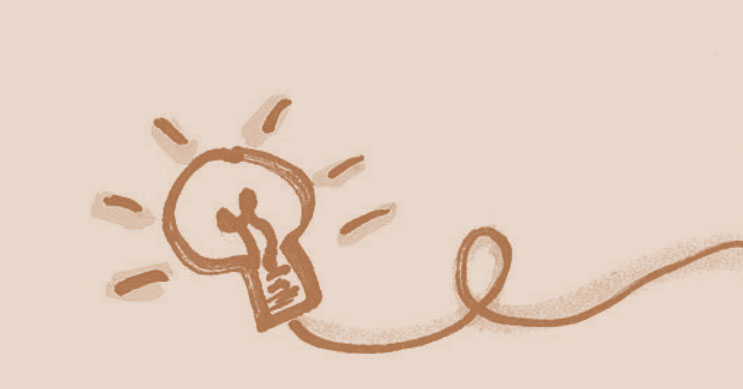

Principles
• Tamejavi incorporates learning from experienced artists, presenters and cultural workers, and believes that participating groups have the capacity to make decisions about the direction and presentation of their work
• There are no set formulas; by encouraging diverse participants to design gatherings and festivals, something new is created each time and learning occurs along
the way
Tips
• Committees should decide when and where to meet
• Try not to saturate the program
• This is a process; it takes time
• Be flexible as shaping a festival program comes with many changes
• Stay focused on the event’s theme
• Be open to people’s creativity
• The program may not be finalized until a few weeks before the event
References
• The Theory Behind Our Work booklet
• Glossary
• Popular Education Section How to Make it Work I
• Tamejavi Coordinating Group Tool
• The Importance of Crafting the Theme of an Event Tool
EVENT PRODUCTION
Budgeting for Your Event
This tool provides ideas for developing a festival budget. Having a budget from the beginning is a crucial planning component because it will give you a clear sense of what you can or cannot do for your event. It’s important to create an effective budget that allows for appropriate decisions and clarifies when modifications need to be made.
Steps for Budget Creation
1. List all areas that will need resources.
2. Create a document with two columns: one titled “Projected Budget” and another titled “Actual Budget.” In the projected column, input the estimated budget for each area, and then after the event, input what you actually spent. This allows you to compare your projected budget with the actual expenses.
3. Do your research if needed; for example, call around to get quotes from different vendors, venues and equipment rental companies.
4. Decide whether purchasing items or renting them is most beneficial to your event.
5. Consider whether financial assistance can be obtained from other sources such as donations, in kinds, ticketing or sponsorships.
EXAMPLE:
If you have a budget of $40,000, you must allocate the available funds amongst the following areas, or other areas you may identify.
• Venue rental
• Equipment rental
• Outdoor market
• Technical production team manager
• Outdoor market curator
• Consultants
• Performing group stipends
• Travel and lodging for performers
• Travel for staff
• Food and beverage for pre- and post-festival events
• Translation services
• Printing of publicity materials
• Supplies, decorations and exhibit materials
• Volunteer coordinator
• Additional resource people
• Planning committee meetings
• Communications/promotion/outreach/building audiences
• Festival film series
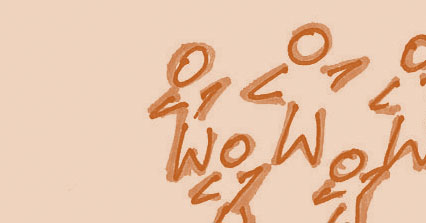

Principles
• Tamejavi activities grow organically from and are democratically organized by members of the Pan-Valley Institute and program committee
Tips
• The budget is a living document, so it may need to be updated every so often
• Assign someone to constantly check the budget and keep it on track
• Be careful with last minute expenditures
• Be strategic about when to pay performers
• Decide the best time to purchase items you need. For example, flowers or food can be purchased the week of the event, but items like plates, utensils, etc. can be purchased a month
in advance
References
• The Theory Behind Our Work booklet
• Glossary
• Popular Education Section How to Make it Work I
• Tamejavi Festival Section
EVENT PRODUCTION
Using a Timeline to Help Plan Your Event
This tool provides an overview of the planning process with the help of a timeline.
Planning Checklist
• As part of planning process, it’s essential to have a timeline to keep the planning committee on track. It provides a reality check when working with he community and peoples’ schedules.
• The planning process must begin earlier than when most people think. For example, if the festival is taking place in September, planning begins in October of the previous year.
• Recruit committee members three months prior to the first meeting.
• Schedule the first meeting one month in advance to allow committee members to plan for it and make the appropriate arrangements to be present.
• Begin to discuss important logistics such as: setting the date for event, identifying the venue for the festival, contracting with specific people early in the process (graphic designer, technical production manager, performers coordinator, media outreach coordinator, volunteer coordinator).
EXAMPLE:
TAMEJAVI TIMELINE
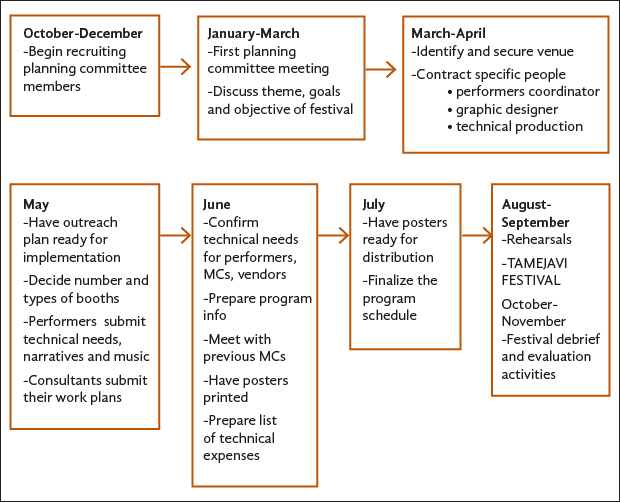


Principles
• Tamejavi activities grow organically from and are democratically organized by members of the Pan-Valley Institute and program committee
Tips
• The budget is a living document, so it may need to be updated every so often
• Assign someone to constantly check the budget and keep it on track
• Be careful with last minute expenditures
• Be strategic about when to pay performers
• Decide the best time to purchase items you need. For example, flowers or food can be purchased the week of the event, but items like plates, utensils, etc. can be purchased a month
in advance
References
• The Theory Behind Our Work booklet
• Glossary
• Popular Education Section How to Make it Work I
• Tamejavi Festival Section
EVENT PRODUCTION
A Logistical Checklist
This tool provides an overview of the planning process with the help of a timeline.
It’s essential to have a logistical plan in place anytime you’re organizing an event. This tool provides insight on the festival planning process with the use of a logistics list and general timeline.
4-6 months before event
-
• Identify a venue and determine if there are certain permits or insurance forms that must be filled out
-
• Identify a venue and determine if there are certain permits or insurance forms that must be filled out
-
• Meet with venue coordinator/manager to discuss your vision for the event and negotiate fees, especially if your organization is a non-profit
-
• Create an estimated budget (e.g., venue fee, rentals, food and beverage, equipment, consultants, speaker fees, travel, etc.)
-
• Create a media publicity plan
-
• Identify and contact sponsors/partners
-
• Meet with graphic designer to plan publicity materials
3-4 months before event
• Confirm performers and speakers
• Gather bio information and photos of performers
• Make travel and accommodation arrangements for performers,
speakers and out of town guests
• Have all performer contracts signed
• Have performers complete artist forms that include what they will be
presenting and their technical needs
• Follow-up to confirm sponsorships and underwriting
• In the case of a cultural kitchen, make sure all vendors are confirmed and that they have completed the booth information form describing what they will be serving and any technical needs they may have
• Identify any security needs for the event with venue coordinator
• Identify an MC for the event if needed
• Create a draft of the event script (e.g., MC and speaker introductions, thanks, closing, etc.)
• Develop publicity pieces (e.g., ads, radio spots, TV interviews)
• Request logos from sponsors for online and printed materials
• Develop invitations, programs, posters, tickets if needed, etc.
• Develop a media list, prepare press release and media kit materials
• Disseminate press release about keynote speakers and event highlights
• Create a Facebook event pageCreate a blueprint for the event, especially if it’s outdoors
2 months before event
• If needed, hire a caterer and determine their preferred method of payment and when payment is expected
• Estimate how many people will be in attendance
• Meet with any vendors that will be attending
• Create a post event follow-up plan that includes evaluation meetings
1 month before event
• Confirm travel accommodations for performers and out of town guests
• Create an itinerary for performers and out of town participants
• Finalize event script and program
• The volunteer coordinator should meet with all volunteers about their event duties and timeline
• Finalize event blueprint
• Create a plan for set-up and tear-down of event, including how to best use volunteers in this process
1 week before event
• Have all planning committee members, including consultants, meet and confirm all details about program and ensure back-up plans are developed for any situation (e.g., weather, additional volunteers for registration or set-up, etc.)
• Provide final numbers to caterer
1 day before event
• Confirm media that will be in attendance
• Ensure all signage is in place
• Ensure registration and media tables are prepared and stocked with necessary items (e.g., blank name badges, paper, pens, tape, stapler, etc.)
• Ensure all promotional items, gifts, plaques, trophies, etc. are on-site
• Make extra copies of scripts for all performers and technical support
• Venue permitting, set up as much as possible the day before. In some instances, we set up the day before in the park and contract security personnel for the night
Day of event
• Depending the time of the event, have all event organizers and volunteers arrive at least two hours before event to finish setting up
• Ensure you have copies of all instructions, directions, phone numbers, keys, extra parking permits, list of VIP guests, seating charts and guest lists with you and the main organizers
• Check-in with each learning group leader and planning committee to ensure the group is on the same page
• At the end of the event, make sure you have enough volunteers for tear-down
Follow-Up
Below are some post-event activities to consider:
• Check your budget status by gathering all receipts, documentation, final registration data, etc., and update your final budget numbers
• Send thank-you notes/emails and acknowledgement certificates to:
• Sponsors, partners, donors
• Volunteers
• Performers/presenters
• Conduct follow-up evaluation meetings with planning committee members and key participants
• Decide on your next steps
EVENT PRODUCTION
Fundraising to Support Your Event
This tool provides different fundraising ideas for either sustaining the financial health of your organization or for raising funds to support an event.
Fundraising Checklist
-
1. Identify your fundraising goal(s).
-
2. As there are different approaches to fundraising, identify the one that will best help you accomplish your goal or use a combination of approaches, keeping a clear strategy in mind. See “Types of Sponsorship Opportunites” below.
-
3. Create a mailing list with the names and contact information of all individuals, organizations, foundations or corporations most likely to respond to your appeal. Contact as many as you can since only 40 to 50 percent are likely to respond, and some will have already exhausted their sponsorship budget for the year.
-
4. Write a compeling appeal letter outlining your fundraising request, being as thourough and specific as possible while ensuring the letter doesn’t exceed one page. Include: background on your organization and why you are asking for funds. If it’s for an event, provide the key details and event goals.
-
5. Include a page highlighting the various sponsorship levels and what sponsors or donors will receive in return for their support. Send this and other promotional materials with your fundraising request.
-
6. Create a timeline of when the letter should be drafted, mailed, and when follow-up calls should be placed. The timeline should include the deadline for sponsorship confirmation and when sponsor’s logos are needed.
-
7. Approximately one week after the fundraising packets are mailed, follow-up with a phone calling confirming the letter was received. Answer any questions they might have and attempt to confirm their support.
-
8. Make a list of the confirmed sponsors and donors, their level of sponsorship or donation, and what you commited in return.
Types of Sponsorship Opportunites
Sponsorships are cash contributions, and you can create different financial levels to make sponsorships manageable to donors with varied budgets. In return, your organization provides advertsing space in promotional materials, acknowledgment as an event sponsor, company name and logo on all event outreach materials, and event tickets.
In-kind donations are non-monetary sponsorships. Examples are volunteers who donate their time and skills, performers who donate their craft, local caterers and businesses who donate food or needed items, or donations like gift certificates and gift baskets for the silent auction.
Silent Auctions involve event guests bidding on items gathered through in-kind donations, and your organization keeps the proceeds. Seek donations from local artists, photographers, artisans, any business that can donate a product or service.
Partners are non-monetary contributors who can support your event by promoting it within their network, recruiting volunteers and providing access to their resources.
Individual Donations are monetary contributions given by individuals who appreciate your work and want to support it without any expectation of a return.
Trade is an exchanage of resources, typically with another company or organization that allows you both to benefit in some way.
Sponsorship Opportunities:
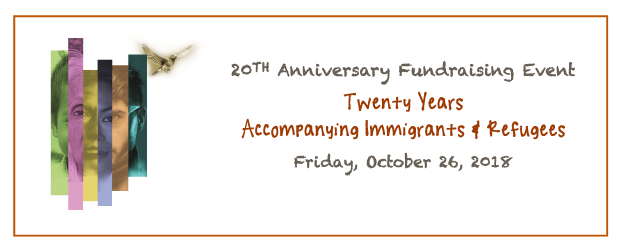
Long Haul Sponsor $7,000
Friend Sponsor $3,500
Companion Sponsor $1,250
Ally Sponsor $600


Principles
• Tamejavi activities grow organically from and are democratically organized by members of the Pan-Valley Institute and program committee
Tips
• If someone in your group has personal connections with an organization you want to approach, let them send the letter and do the follow-up
• Non-profits can get reduced advertising rates
• If your donation request is denied, don’t take it personally or give up; you can approach them again in the future
• Have someone help you with fundraising tasks as they are time consuming and requires lots of public relations
References
• The Theory Behind Our Work booklet
• Glossary
• Popular Education Section How to Make it Work I
• Tamejavi Festival Section
EVENT PRODUCTION
Media & Publicity: Crafting Your Message
This tool provides basic steps for developing a media strategy to promote your advocacy or organizing work and events.
-
Reaching out to the media is an important way of informing the public about the work not only that you do, but the community-building efforts of the people you work with (immigrants and refugees in our case). Securing mainstream media coverage when working with immigrants and refugees presents challenges as they tend to focus on stories of victimization. We learned to be creative in changing the negative perception of immigrants and refugees by counteracting it with positive success stories.
-
IDENTIFY YOUR MEDIA GOALS
Establishing your media goals is the first and most important step when designing a media strategy, as this will help you craft your message and be strategic about the media outlets you need to utilize.
-
Example:
Counteract the anti-immigrant narrative by giving visibility to the economic and cultural contributions of immigrants and refugees.
-
IDENTIFY YOUR AUDIENCE
Be specific about the people you want to reach with your media publicity or campaign. Who do you want to influence? Who do you want to attend your event? Identify specific groups of people you want to influence or have join your efforts. It could be elected officials, educators, faith groups, opinion-makers, influencers.
-
CRAFTING THE STORY USING YOUR NEWS
What new perspective are you putting out there that can get the media’s attention? Very few news stories about immigrants and refugees come from the lens of the mainstream media. We have to be creative and define our own factual assessment of the root cause of migration.
-
FRAMING THE ISSUE
Example: How have anti-immigrant groups and the media framed our issue?
We live in an anti-immigrant, anti-communities-of-color climate led by right wing conservatives. This climate has been reinforced by a mainstream media that has influenced the political debate, resulting in
violations of human and individual rights and unfair treatment under the judicial system.
-
HOW IS THIS CLIMATE IMPACTING OUR COMMUNITIES?
Examples:
-
• We are divided and confused as to the best tactics to use
to organize
-
• Immigrant communities, especially those who are undocumented, are intimidated and terrorized due to ICE raids
-
• Deportation and raids have led to the separation of families with family members being left alone, feeling violated, confused and traumatized
FRAMING YOUR MEDIA MESSAGE
Be creative in simplifying complicated issues in a way that regular people can understand and respond to. Think about your audience when crafting the message; how does your message reinforce the key beliefs of your audience and influence their behavior? Your message will communicate your basic ideas of your publicity and media campaign.
MEDIA OUTLETS
Be very strategic about contacting the media outlets that will reach your target audience. Have an updated media list as media people are always moving. Send information to journalists that covers stories similar to yours.
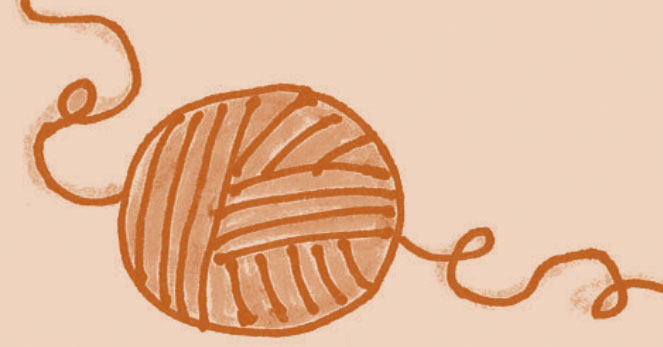

Principles
• There are no set formulas; by encouraging diverse participants to design gatherings and festivals, something new is created each time and learning occurs along
the way
• Attracting diverse audiences is as important as presenting multiple forms of expression
Tips
• Your message should be aimed at your target audience
• Messages are not necessarily soundbites; they are ideas to share with the public
• The message must be repeated and retold
• The message must contain simple ideas that can be explained in one or two sentences
• Messages take time to create; don’t rush the process
References
• The Theory Behind Our Work booklet
• Glossary
• Popular Education Section How to Make it Work I
• Tamejavi Festival Section
EVENT PRODUCTION
Setting the Stage and Addressing
Technical Needs
Description
This tool provides an outline of a program script with examples of the stage settings and technical needs for the TCAS Grand Finale.
EXAMPLE
No Longer a Stranger
Tamejavi Culture and Arts Series Grand Finale
May 18, 2013
Lights off
OPENING
5:30 – 6 p.m.
Important Announcements slideshow: credits, donations, documentation, cell phones off, no flash photography, photo collageBlessing Ceremony
6 – 6:30 p.m.
Soft lights in the audience section Curtain opens, stage lights spotlight the four spaces where the market will be set
6 p.m.
Zapoteco Dance Group enters the theater from the theater’s main entrance, left and right corridors
6 – 6:10 p.m.
Fellows and their performers enter the stage and set up the market (Silvia, Juan and Ruben to have one puesto, Sokha and her performers one, Bee and his performers one, Tahereh and her performers one, all will stay on stage)
6:10 – 6:13 p.m.
Stage lights spotlight the four puestos (booths) of the market and Brenda
Once market is set and the dance group arrives to the front of the theater, Brenda goes up to the stage to welcome everyone to the Central Valley Market /Garden of Cultures and Traditions. She will reflect nostalgically about the markets in Oaxaca, Mexico, where people from different states bring their products to sell and families go to have fun. She will discuss how important la Banda is for the plaza, how much love her family has for music, and how similar the Tamejavi market is to the one in her hometown.
Spotlights on Brenda and Sokha and on Sokha’s puesto; soft lights in the other three puestos. When the Blessing Dance starts, very soft lights on the market and bright lights on the dance.
Brenda, welcomeing audience to the Tamejavi Market
BRENDA: Hello, everyone! Welcome to the Tamejavi market! I am Brenda, I am from Oaxaca, Mexico, and I live in Madera.
Ah, the market... I remember the market in my town in Oaxaca. You go there at least twice a week. People sell and buy almost everything from fruits and veggies to live chickens and utensils! People meet, talk, exchange news, gossip, and exchange cooking recipes. And the music! There is always a band or somebody playing an instrument. Or just the music from the radio or from vendors who sell CDs.
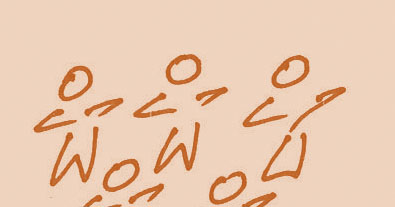

Principles
• Redefine the value of art to include culturally diverse forms of expression in the broader cultural community
• Claim a platform and space to publicly present cultural pride, and identity and voice issues identified by participants
Tips
• To have a successful event, you must be strict with time and have a minute-by-minute script
• All program participants must know in advance what the program includes, and the time and length of each presentation
• Have one or two stage mangers to make sure artists are on standby before their presentations
• Go over the technical needs with the technical director several times before the event
References
• The Theory Behind Our Work booklet
• Glossary
• Tamejavi Section
• Popular Education Section How to Make it Work I
EVENT PRODUCTION
Preparing Cue Cards to Ensure
Your MC’s Success
This tool provides general ideas for developing cue cards for your master of ceremonies (MC). The cue cards will help the MC stay on schedule, smoothly transition between presentations, acknowledge sponsors and event planners, and ensure the audience receives all necessary information. Cue cards help the MC stay on track and focused on material that is relevant and important. They also allow MC to interact more freely with the audience.
Here are some ideas for ensuring your MC will enhance your event. To be successful, your MC should:
• attend a minimum of two to three planning committee meetings so they have a clear understanding of the event’s goals and objectives
• understand the theme and vison for the event
• be comfortable in front of a crowd
• be knowledgeable about the diversity of the community
• bring positive and energetic vibes
• keep track of time and the schedule of events
• coordinate with his or her co-MC in cases of having multiple MCs
Cue Card Example:
Cue Card # 5
Noon – 1 p.m.
Cultural Kitchen
MCs: Vicki Filgas (English) and Antonio Cortes (Spanish)
Public announcements, briefings about the current immigration legislation (Leonel Flores)
Stories from different cultures about special meals eaten during important ceremonies such as weddings (call cultural kitchen presenters: Rosa Lopez, Carolina Soto, Juan Santiago, Shazia Malik, Mai Der Vang up to the stage)
Recognition: Thank founders and supporters of the James Irvine Foundation and Rockefeller Foundation
Logistics: location of restrooms, please keep the venue clean, and any last-minute announcements
Request donations: donation boxes in PVI tent
Announcements: the fundraiser event on Sunday
Program introduction: To start the artistic and cultural section of today’s program, the Native Women’s Council will be sharing songs and cultural stories.


Principles
• Creating a safe learning space takes patience and is important when convening diverse groups
Tips
• Create one main heading per card
• If you have MCs presenting in more than one language, make sure you have cue cards in both languages
• Use a large font that’s easily read
• Write on only one side of each card
References
• The Theory Behind Our Work booklet
• Glossary
• Popular Education Section How to Make it Work I
• Tamejavi Section
EVENT PRODUCTION
The Volunteer Coordinator’s Role
This tool describes the role of a volunteer coordinator, who serves as the liaison between the event organizers working on behalf of the organization hosting the event, and the volunteers.
Volunteer Coordinator’s Responsibilities
• Be involved with the organizing committees to know the exact needs of each component of the event
• Based on these needs, develop a volunteer recruitment plan
• Carry out the recruitment plan
• Develop a database of contact information based on volunteer applications in order to maintain constant communication with volunteers
• Identify how volunteers’ skills/areas of interest fit with your event’s needs
• To maintain the highest level of organization prior to and during the event, each volunteer should focus on the area(s) and task(s) they have been assigned
• Make sure each volunteer leader is working along with the organizing committee
Success Story
Juan Santiago was the volunteer coordinator for the 2006 Tamejavi Festival. He was referred by a community member who said Juan was only 17 years old, but that he was very responsible, passionate and committed. PVI staff were reluctant to give such a daunting task to a young person, but those who recommended him believed in him so strongly that they were willing to back him up if necessary.
Juan’s role was to be part of the organizing committee meetings to learn how many volunteers would be needed in each area. He was able to recruit 80 volunteers through different venues. Each volunteer submitted an application which allowed Juan to utilize their skills accordingly and to develop a schedule for the day of the event.
“Personally, I do not regret signing up to assist PVI staff as a volunteer for the initial phase of the 2006 Tamejavi festival because that opportunity eventually led to my first formal employment.”
Juan Santiago


Principles
• Start with people’s experience
Tips
• Your volunteer coordinator must be an organized and outgoing individual
• It is key that your volunteer coordinator know the community well
• Your volunteer coordinator should have a deep understanding of the event objectives
References
• The Theory Behind Our Work booklet
• Glossary
• Popular Education Section How to Make it Work I
• Tamejavi Section
EVENT PRODUCTION
Recruiting Volunteers
This tool provides information on recruiting volunteers, who should understand that volunteering is an action that people take to show their solidarity for a cause or passion.
Who can be recruited as volunteers?
Anyone who shares the mission and vision of your organization/event can volunteer.
How do you recruit volunteers?
For grassroots-based organizations that work with low-income and ethnically diverse communities, a more community-oriented approach works better for recruiting volunteers. This is not to say that conventional recruiting methods should be ignored, but it’s important to understand that to get volunteers from your target communities, different methods should be used.
How do you convince people to become volunteers?
It’s important for the recruiter to inform potential volunteers about the goals of the event. The idea is to connect the prospective volunteer with the organizations’ mission. Make them feel that they can help you and your organization to achieve this common goal. After explaining about the organization, a brief description of the event should follow.
Should you compensate volunteers?
Volunteers are key partners in realizing your event’s success, and as such, their work and time should not go unappreciated. The day of the event, make sure there are snacks and, whenever possible, food available. Encourage volunteers to participate/engage in the event. Volunteers for our events receive a shirt, certificate and sometimes we have organized retreats in recognition of their support. We are happy to sign the necessary paperwork for school purposes.
Recruiting and Preparing Volunteers
1. As soon as you know you have some sort of activity in which you will need volunteers, work on a plan of recruitment.
2. This plan should include: volunteer areas description and time shifts, a flyer that has information about the event, and a volunteer application.
3. Contact allies like universities, non-profit organizations and clubs and ask them to help you recruit volunteers. Ask for an invitation to make a presentation during one of their upcoming meetings.
4. When you start receiving applications, make sure to let interested people know you have received their application and will be contacting them as the date of the event approaches.
5. Work on a schedule for the volunteers based on their skills, availability and interest with the needs you have for the event.
6. If possible, send the schedule and the assigned tasks to volunteers prior to the event.
7. On the day of the event, have your own copy of the schedule and tasks so you can help guide volunteers arriving for their shifts.
“Volunteers are indispensable human capital for any event, no matter the size or type.”
Juan Santiago
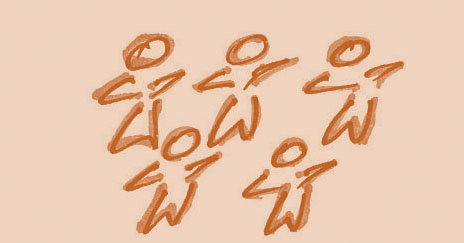

Principles
• When combined, cultural exchange and community organizing increase the impact of local efforts to improve Valley communities and strengthen organizing networks
Tips
• Have volunteers assigned to clear roles and designated areas
• Whenever possible, hold a volunteer orientation prior to the event
• Make sure volunteers feel part of the event
• Conventional recruiting methods: education fairs, email blasts and social media
• Non-conventional recruiting methods: home visits, attending community events contacting community leaders
References
• The Theory Behind Our Work booklet
• Glossary
• Popular Education Section How to Make it Work I
• Tamejavi Section
EVENT PRODUCTION
Recruiting Grassroots Leaders, Family and Friends as Volunteers
This tool shares insights for recruiting grassroots leaders and family members to serve as volunteers.
What are the benefits of recruiting community leaders as volunteers?
Community leaders can be a great asset for your organization/event. Usually, community leaders are well known and respected and can help you recruit additional volunteers from within their community. Additionally, most community leaders already have volunteer experience and require less training.
What are the challenges of recruiting community leaders as volunteers?
Most community leaders are busy with multiple commitments besides the one they have made to your organization/event. Often, they can’t cancel other engagements that may take priority. Therefore, instead of recruiting community leaders as volunteers, they can play a different role like inviting your volunteer coordinator to one of their community events to recruit volunteers.
How do you engage your family and friends as volunteers?
Volunteering is a great opportunity to get your family and friends involved in your work. Sometimes, family and friends became the best volunteers because you have access to them almost any time of the day. Oftentimes, volunteer work does not end at the event location or at the office, but continues at home. This is especially true for grassroots cultural organizing, as much of the work is done at home.
Recruiting Community Leaders
1. Identify key leaders in the communities you will be working with
2. Meet with community leaders to tell them about your organization, event/activity and the support you need
3. Ask them to identify people you can potentially meet with or events in the community at which you can make presentations
“One of the key principles of popular education is the belief that everyone, including the non-educated, farmworkers and indigenous people, are sources of knowledge and agents of change. From this premise, one should conclude that volunteer opportunities should be open to everyone regardless of social class, level of education or literacy. These should not be barriers for anyone who wants to be a volunteer.”
Juan Santiago
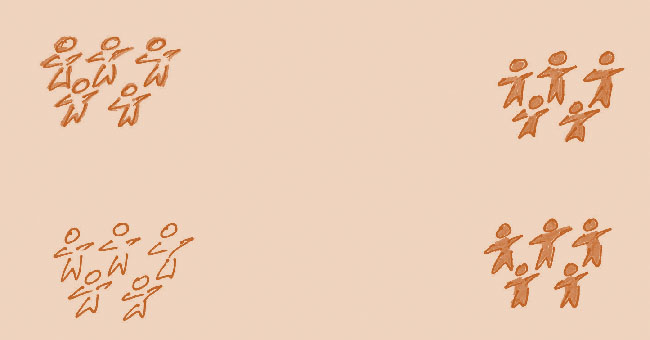

Principles
• Start from people’s experiences
• People will be more motivated and interested in organizing around issues that are relevant to them
Tips
• Meet with community leaders to share about the event, not just to ask for access to potential volunteers
• Other tips are included in the tool
References
• Community Protocols
• The Theory Behind Our Work booklet
• Glossary
• Popular Education Section How to Make it Work I
• Tamejavi Section
FESTIVAL COMPONENTS
Pre and Post-Event Reflection Circle
The tool introduces a pre- and post-event practice called the reflection circle. The Pan Valley Institute has always practiced reflection, but we have been more intentional about it since the first Tamejavi Festival in 2002.
The Pan Valley Institute believes in the power of reflection, as through sharing, we recall moments of joy, challenge and personal growth. In reflecting, we realize the need to open and maintain artistic and cultural outlets that allow us to express ourselves, our cultures and our communities. It’s important to make time to reflect on the shared journey together as we enter a new phase of continuing the work of strengthening our communities and intercultural learning.
Pre-reflection circle takes place before the event as a way of kicking it off. Those who have been part of the event planning are sent a letter that invites and encourages them to attend. During the circle, participants reflect on the journey that has led to the event and share their fears and hopes for the event and beyond.
Post-reflection take place after the event. This is the time to reflect on the actual event and think about the future.
The setting for the reflection circle is informal and relaxed. An agenda is developed in advance, as well as questions that will guide the conversation. Staff have facilitated the reflection circle in some cases, and other times artists have led the conversations.
Pre-reflection Sample Questions
• What moment was the highlight for you?
• As an organizer, how have you changed? Where are you now?
• What have been the biggest obstacles in involving your community in the planning of your event? Are there community members that have reached out but not yet been involved? What would you do differently next time?
• Describe the type of support you have received from your community.
• What are you most concerned about going forward?
• What are you most excited about going forward?
Post-reflection Sample Questions
• Were the objectives and goals of the event met?
• Is there anything that you have learned that has been useful to you and your organization?
• What were your expectations of the event? To what extent were those expectations met?
• To what extent do you feel you had ownership of the process in organizing the event?
• What kinds of alliances should be made to bring back this project?
• What would you like to see next?
“In our journey to Tamejavi, we have experienced new cultures, ideas and values. We have gathered and joined hands while learning to overcome and strengthen our voices. We have created moments in history that will forever be ingrained. Indeed, we have traveled far.”
Myrna Martinez Nateras


Principles
• The work we are committed to is a long-term process that requires commitment, patience, time and dedication
Tips
• Set chairs in a circle so that all participants can see one another
• It’s important to have
a note taker
• Make sure everyone has the chance to share
References
• The Theory Behind Our Work booklet
• Glossary
• Tamejavi Section
• Popular Education Section How to Make it Work I
FESTIVAL COMPONENTS
Planning a Blessing Ceremony
This tool provides information on how to plan a blessing ceremony and the protocols to keep in mind when developing one.
The Pan Valley Institute initiated the practice of beginning our events with a blessing ceremony during the first Tamejavi Festival in 2002. This space acknowledges the history and long-time presence of our Native American brothers and sisters in the Central Valley. The blessing ceremony also serves as a spiritual guide as we close one cycle of work and open a new one.
Organizing a Blessing Ceremony
• It has been our practice to have members of the Native American community on the planning committee, so we have built relationships with them over the years. Through them, we contact a member of their tribe to do the Blessing Ceremony.
• When incorporating a Blessing Ceremony into your event, you need to contact someone who knows the protocols and has trust within the Native American community.
• Be clear with your community about the purpose and importance of the Blessing Ceremony.
• Once you have contacted the person who will lead the Blessing Ceremony, meet with them so they get to know you, your organization and learn about the event.
• Request as much information as possible from the person who will lead the ceremony and request a biography so he or she can be properly introduced.
• Most of the time, the Blessing Ceremony will be led by an elder, so make sure you know if he or she will need special accommodations.
• Ask the person how much time they will need and let them know how much time you have allocated for the ceremony in the program.
• On the day of the event, make sure that someone is ready to welcome the person conducting the ceremony.
• It is recommended that you give the person an offering and provide a stipend to cover traveling expenses.
Protocols to Follow
• Ask that all who attend be respectful as this is a sacred ceremony, not a performance
• No photos or videos are allowed
• Do not stop the ceremony if it takes longer than expected
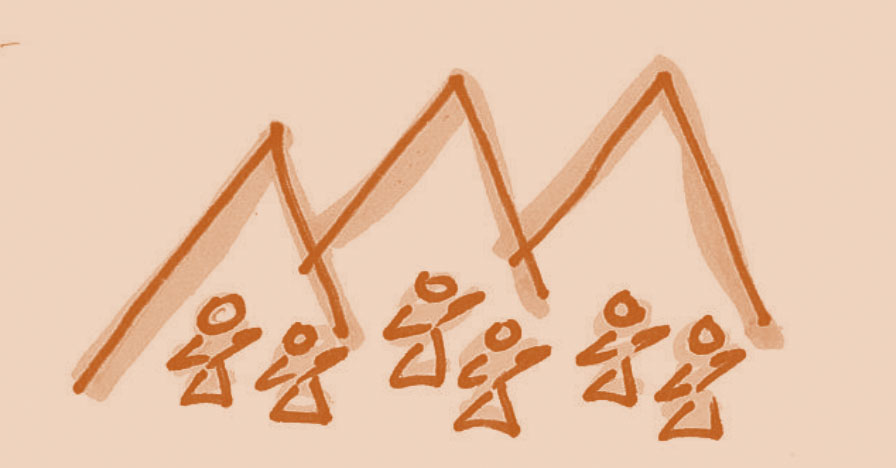

Principles
• Creating a space for the expression and reproduction of indigenous ceremonies and artistic and cultural knowledge is a first step towards decolonization
• Opening opportunities for enhancing indigenous ceremony and artistic expression while respecting its authenticity
Tips
• If sage will be burnt during the ceremony, make sure that you check with the venue to make sure it’s safe to do so
• It is highly recommended this ceremony take place outdoors
• Offering recommendations: fruit, tobacco and other traditional foods
References
• The Theory Behind Our Work booklet
• Glossary
• Popular Education Section How to Make it Work I
• Tamejavi Section
FESTIVAL COMPONENTS
Planning an Outdoor Market
This tool provides general information about the logistics of planning an outdoor market. The outdoor market is one of the Tamejavi Festival staples; in fact, the word “Tamejavi” symbolizes an outdoor market based on traditions of creating spaces for sharing art, culture and food and where children have a space for playing, learning and socializing.
A Tamejavi outdoor market allows for photo exhibits, performances, poetry and food. It’s a place for people to come together to enjoy and learn from one another while building relationships.
The Tamejavi Festival began as a combination of indoor and outdoor activities and presentations. For the first festival in 2002 and the second in 2004, we had access to an indoor venue like the Tower Theatre where we could create an outdoor market in the parking lot. Following festivals were almost entirely outdoors, including the main stage for performances.
The outdoor market can showcase:
• arts and crafts booths where artisans from indigenous and other communities share their items
• local community organizations who offer resources to share with the public
• a Cultural Kitchen, where grassroots chefs bring their food to expose people to culinary diversity and new flavors
• a children’s corner, where kids learn, have fun and enjoy being together
Aesthetics for Creating an Outdoor Market
If there’s not an indoor venue available, you can set the stage for performers in the outdoor market.
Be mindful and creative of setting up the different components of an outdoor market. With the help of an artistic technical support person, develop a blueprint in order to make good use of the space and make it beautiful.
Some Ideas of Technical Needs
• Identify a knowledgeable technical manager
• Rent a U-Haul if needed to transport materials to and from the outdoor market
• Rent an appropriately-sized stage
• Have a good sound system and appropriate outdoor equipment
• Have an electrical chart for the whole market
• Each food booth vendor and performer should fill out a form specifying their technical needs
• Provide outdoor lighting
• Hold a meeting with your technical manager prior to the event to review all technical details
• Create outdoor tech and staff communications plan
• Supervise the set-up and tear-down of rental equipment
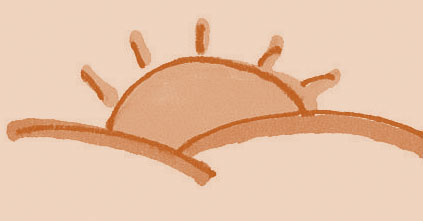

Principles
• Confronting isolation and marginalization by engaging in cross-cultural events in the public sphere
• Building a broader sense of community through exchange between diverse communities
Tips
• Always consider the venue you will be using, whether it’s a community park or indoor venue. This will help with deciding what components need to be outdoors or indoors
• Visit the venue many times. Get familiar with the space and visualize how you and your group want to use and transform that space
References
• The Theory Behind Our Work booklet
• Glossary
• Popular Education Section How to Make it Work I
• Tamejavi Folder
FESTIVAL COMPONENTS
Hosting Platicas (Community Dialogues)
This tool shares one of the key components of the Tamejavi Festival – the platicas. We decided to use the Spanish word platica because it describes the format and atmosphere we want to create in these spaces of dialogues. Platica means conversation, where all participants are engaged and actively listening and conversing.
Experts may be invited to give a brief exposition on the topic of the platica to prompt a conversation; if experts aren’t used, we open the space with a theme and the conversation is led by a facilitator using problem-posing questions or prompts to guide the conversation. The hope is that these conversations will lead to an action or new network and that relationships will form. Platicas can be a component of an event or stand-alone community dialogues. It’s critical to create these spaces for addressing current affairs that impact immigrant and refugees since the access these communities have to quality information is so limited.
How to:
• Identify the theme(s) of the platica(s). If platicas will be a component of an event, make sure that the theme relates to the overall theme and message of the event.
• Identify a facilitator for the platica, as well as appropriate experts if you plan to utilize them. Make sure the experts understand what the presentation should entail and that it is intended to provoke conversation
• Design creative ways of promoting the platicas so people feel compelled to attend
• Work with the facilitator and/or experts on how the platica will be conducted
Themes of Past Pan Valley Institute Platicas
• racial tension
• immigration issues (anti-immigrant policies)
• cultural and active citizenship
• preservation of language of indigenous communities
• civic participation
• gender issues
Sample Platicas
In 2018, the Pan Valley Institute organized a series of platicas, one of which was titled “U.S. History of Exclusion.” This platica provided the opportunity for participants to share the history of exclusion experienced by different communities in the United State and the local impact, including the Chinese Exclusion Act of 1882, executive order 9066 that placed Japanese-Americans in internment camps during World War II, and the current policies like the building of a wall and the Muslim ban. We invited members of affected communities to share about how polies of exclusion impacted their community and to share a personal story.
“An Interfaith Vision on Human Migration” brought together diverse faith leaders in an effort to provide different lenses to the complexities of human migration from a faith-based perspective. It explored how the faith-based and religious community should respond in the face of anti-migration policies impacting their members.


Principles
• Provide safe and welcoming learning spaces
• Start from people’s life experience and connection to the context of their lives, history, culture, world vision and perspective for change
Tips
• We open the space and resources for others to be involved.
• Organizers can be facilitators or presenters if they have expertise on the matter to be discussed
• This is an opportunity for the planning committee to support with research or identifying individuals who can potentially share
References
• The Theory Behind Our Work booklet
• Glossary
• Popular Education Section How to Make it Work I
• Tamejavi Section
FESTIVAL COMPONENTS
Tips for Hosting a Film Series
This tool shares one of the key components of the Tamejavi Festival – the platicas. We decided to use the Spanish word platica because it describes the format and atmosphere we want to create in these spaces of dialogues. Platica means conversation, where all participants are engaged and actively listening and conversing.
A film festival or film series is a great opportunity to organize an enjoyable event and curate films that are rarely seen in the mainstream. There are thousands of independent movies that get shown at various film festivals around the world but are never distributed or publicized widely. Through Tamejavi Festivals and a one-time film series at UC Merced, we have screened movies from many backgrounds and countries, including a documentary about hip-hop in Palestine, a Filipino family drama, a respected movie from Mexico, and various short films made by Hmong, Native American, Indigenous, Indian and other backgrounds.
It’s important to know your audience. For instance, the board for the UC Merced Film Series identified their audience as being of Filipino, Arab and Latin backgrounds. With that in mind, we researched various film festivals and production companies for suggestions of films that would suit our audience. After making a general list of relevant feature films, short films and documentaries, you must find the contact person for each film, often starting with a Google search. For short films, we usually invite filmmakers to submit their film for possible inclusion in the festival. There are thousands of short films out there, so it’s important to have some quality control. We don’t always have the privilege of screening features before selecting them, but can do so with short films. A general letter inviting submissions should explain the festival’s goal. Once you have screened the film, inform the filmmaker whether or not you plan to show it.
Timeline Tips and Considerations
• Contact relevant filmmakers, screen films and make final selections early enough to allow sufficient time to promote your event.
• Invite filmmakers to attend the screening to introduce their film and participate in a post-screening audience Q&A. Budget allowing, provide airline and hotel accommodations. Assign each filmmaker a liaison responsible for their transportation, schedule and general comfort during their visit.
• Ensure each filmmaker provides a copy of their film prior to the public screening in a format compatible with your technology.
• Engage the venue’s tech person or hire your own.
• Hold a tech run-through with your tech person prior to the event.
• Schedule time between each film for Q&As with the filmmaker, tech preparation for the next film and a quick audience break. Have mood-appropriate music prepped to play during these break times.
• Follow-up with filmmakers after the event to see if you are responsible for returning their films.


Principles
• Providing space for new definition of art
• Multilingual and broad-based communication strategies are important for engaging diverse communities
• Attracting diverse audiences is as important as presenting multiple forms of expression
Tips
• Tips are included in the tool
References
• The Theory Behind Our Work booklet
• Popular Education Section How to Make it Work I
• Glossary
• Tamejavi Section
FESTIVAL COMPONENTS
Including Artists in Your Presentations
This tool provides advice for including artists from different mediums in your festival program.
One of the Tamejavi Festival’s central goals is to provide opportunities for immigrants and refugees to regain and reclaim their traditions of cultural and creative expression. Our main focus has been to identify emerging and popular artists within immigrant communities and provide them with a stage that validates their creativity, but we also seek to give them resources to continue practicing and honing their craft. We have been very intentional about encouraging immigrants and refugees to recollect stories of their cultural and artistic traditions.
Success Stories
• During the first Tamejavi Festival in 2002, we set the stage for a dance called Los Diablitos, a traditional dance from Oaxaca that was performed at the Tower Theater during the festival’s opening.
• Other Tamejavi Festivals have welcomed artists like the Urban Bush Women, who came not only to perform, but to engage with local artists.
• Filmmaker Maurine Gosling not only presented her film, but also contributed her film editing skills to the festival.
• We have partnered with theater experts like Ernesto Torchia from Argentina and Fresno State Theater Professor Thomas-Whit Ellis to train and support Tamejavi participants with script writing and play presentations.
• We invite artists not just because they are “experts” in their field, but because of their ability to work alongside immigrant artists and cultural leaders as creative practitioners equally concerned with giving a voice to marginalized communities and achieving social justice.
Steps for Artist Inclusion
1. Once you begin meeting with your event planning committee, ask them to identify any local artists from their community. This is way for planning committee members to engage in the process of discovering local artists and validating their talent.
2. Set a meeting with the artist to begin establishing a relationship.
3. Once an agreement has been reached with the artist, invite them to get involved in the planning and creative processes leading up to the event. This involvement helps with the relationship building process.
4. When utilizing out-of-town artists, try to include them in planning meetings via phone or Skype. Invite them to arrive to the festival as early as possible and include them in the reflection circle and reception.
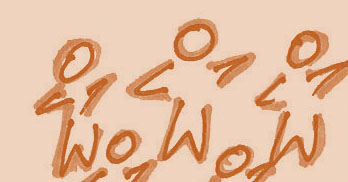

Principles
• Tamejavi incorporates learning from experienced artists, presenters and cultural works, and believes that participating groups have the capacity to make decisions about the direction and presentation of their work
• Popular participation in cultural production is integral to community life and civic engagement around the world
Tips
• Have each performer create a technical plan for their presentation
• During one of the performer’s meetings, invite the technical manager so he or she understands the technical needs of each artists
References
• The Theory Behind Our Work booklet
• Glossary
• Popular Education Section How to Make it Work I
• Tamejavi Section
FESTIVAL COMPONENTS
Theater of the People
The Pan Valley Institute has long used theater as a way to share cultural histories and oral traditions. From the first Tamejavi Festival we hosted in 2002, theater became the preferred art form for participants to share their personal stories. The communities we work with have strong oral traditions that have been the means by which they pass down their history, language and other cultural traditions, so theater naturally became a favorite medium.
This tool shares how theater can be used to bring people together to share their stories and some tips for getting started.
Success Story
As part of the Tamejavi Cultural Organizing Fellowship (TCOFP), a group of young Zapotecos from Madera, Calif. came together with a common purpose of sharing the story of their people. A diverse group ranging in age from 12 to 25, they interviewed elders from their community and started piecing together various pieces of the proverbial puzzle until a full picture began to emerge.
Using participatory action research and popular education tools, they began telling their community’s tale. Through story circles, brainstorming sessions and discussion circles, they created a budget, script, cast the actors and decided on the message they wanted to convey. The result was two plays. The first, titled “Fandango Zapoteco: Teatro del Pueblo Para el Pueblo,” focused on allowing the younger generation of Zapotecos to learn about their culture and traditions. “A Zapoteco Immigrant Story of One, Reality of All,” was a sequel to the first play. It told the story of the Zapoteco immigration journey to the U.S. and the challenges faced by migrant indigenous communities in this country. By implementing pieces like a traditional Oaxacan wedding ceremony, participants learned about their native culture and played a part in celebrating and preserving it.
The following aspects of developing a play should be considered when implementing this process:
Developing a Story
PVI’s group of young people spent many Friday evenings gathered to share their own stories and those of their parents and grandparents, determined to tell the story of their people. The sharing of their own stories played a large role in finding the story they wished to tell. They began the brainstorming process by deciding 1) the story they wanted to tell; 2) why they wanted to tell this particular story; and 3) who their audience was.
They focused on finding the facts needed in order to complete the picture they wanted to create. Using the practice of participatory action research, they interviewed elders from their community and others who had stories to share. They identified needs that needed to be filled and how to address them. They used story circles, brainstorming sessions and discussion circles to work through planning all aspects of presenting a play.
Creating a Budget
This should include everything needed to pull off the production, from pencils needed for script writing, snacks for meetings, stage rental, costumes, securing musicians, technical needs, etc. Creating a budget serves as a dual opportunity to make a list of everything you’ll need in the way of inventory. Knowing your budgetary needs can provide a realistic picture of how big your play can become.
Script Writing
Professional script writers invest years in special schooling and training, so realize your limitations when dealing with a volunteer community theater group. When possible, enlist the help of professionals who believe in your vision and can provide guidance. Focus on making your best effort rather than getting caught up in specifics and technicalities.
Our group took pieces of every participant’s immigration story and worked them in to the script. It made the story authentic while allowing for individual healing as well. Rather than writing specific dialogue, most of the lines were left up to the actors to tell their stories in their own words.
Casting Actor and Support Roles
We operate under the belief that everyone has something to contribute, so using the principles of popular education, we tried to place people in roles that best fit their individual strengths and talents. Deciding who would play what role in the play was a participatory activity where we worked together to nominate fellow participants for appropriate roles. In addition to acting, there were a number of support roles that needed to be filled (note taker, script writers, prop manager, stage manager, volunteer coordinator, etc.). Delegating tasks to the appropriate people helped keep the workload manageable for all participants, rather than leaving all the work to a few.
Sustainability
It’s important to determine up front whether your work is sustainable. Can you keep the group together and engaged while moving forward with the mission and vision? Immigrant life can be geared more toward survival and making ends meet than on community engagement and maintaining cultural traditions. In order to stay on task, set goals and milestones and have a plan for reaching them that will keep the group engaged.
Carrying Your Message
When the lights go down, the props are put away and the venue cleared, was your purpose accomplished? What message did the audience take with them? How were the participants changed as a result of their involvement? The bottom line is that your production can be considered a success only when it served its purpose. Whether that is to bring people together, send a message, inspire change, or act as a form of expression and liberation is totally up to you.
“It’s crucial to have spaces and opportunities to recreate our artistic and cultural practices because it’s the only way to keep our culture alive. Without these spaces, we can’t practice our culture, so we will lose it. These spaces are important not only for us, but for the community at large to understand us.”
Brenda Ordaz


Principles
• Tamejavi incorporates learning from experienced artists, presenters and cultural works and believes that participating groups have the capacity to make decisions about the direction and presentation of their work.
• Popular participation in cultural production is integral to community life and civic engagement around the world
• People work collectively, share experiences and encourage participation.
• This process is less about teaching than it is about allowing participants to discover what they know.
Tips
• Be flexible with participants’ schedules.
• Provide support to those experimenting with creative expression by allowing them to lead the process.
• Encourage participants to tell their stories in their own unique voices.
• Provide the tools participants need to be successful.
• When utilizing professional artists, ensure they understand their role of sharing their craft with those whose creative expression has been denied.
References
• The Theory Behind Our Work booklet
• Cultural Organizing section
• Glossary
• How to Make it Work Section I
BACKGROUND
History of the Tamejavi Cultural Organizing Fellowship Program (TCOFP)
After several years of devoting a great deal of time and resources to organizing the Tamejavi Festival, the Pan Valley Institute decided to focus its attention beyond the frame of a bi-annual festival and more towards supporting immigrant cultural holders, oral tradition masters, and leaders and organizers in their own communities. In keeping with our popular education values, we decided to support and catalyze what already exists in immigrant communities instead of attempting to scale up our own cultural organizing through the festival. This ambition was realized through the Tamejavi Cultural Organizing Fellowship Program (TCOFP), launched in the fall of 2011. The inaugural program selected 10 fellows representing diverse immigrant and refugee communities from across the Valley. This first cohort spanned a wide range of ages, languages, skills, experiences and approaches to cultural organizing. Each one was committed to helping their community find a sense of belonging and build broader civic and political participation in Valley life. They all believed that the arts, creative expression and traditional practices compose the lifeblood of indigenous and immigrant cultures and have an important role to play in catalyzing broader political participation and power.
TCOFP, which occurred between 2011 and 2017, graduated 23 fellows and four apprentice fellows. They represented a multigenerational group of men and women from Mexican Indigenous, South and Southeast Asian, Palestinian, Pakistani and Iranian communities. An additional 200 people indirectly benefited from the program through their roles as learning group members.
TCOFP participants were required to:
• learn the basic principles of popular education, participatory action research and cultural organizing
• host cultural exchanges within and beyond their own communities
• form a local learning group that accompanied them through their participation in the fellowship
• conduct a community assessment and cultural inventory to gain a better understanding of pressing concerns, collective cultural assets, and the impact of migration and displacement on individuals, families and cultures in their community
• designed public cultural projects to mobilize local cultural capacities and address key issues based on the findings of their collaborative community assessment, fellows and working teams
• gain knowledge and skills to build community-based cultural engagement and arts participation among Central Valley immigrant communities and beyond
• conclude the program with a shared commitment to promote culture and artistic engagement as an entry point for broader immigrant civic participation
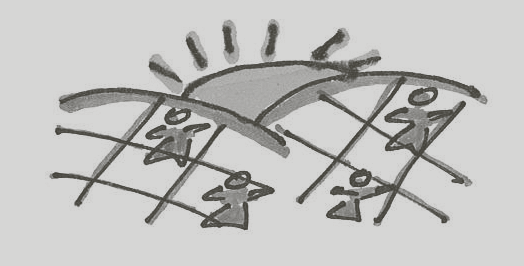

Principles
• Collective study and mutual learning lead to ACTION: “We don’t know things unless we take action on things”

Tips
• Even though there is a syllabus, participants must be flexible as this program is not a school
• Be adaptable to the cultural, economic and educational diversity of the group
References
• Community Assessment
• Cultural Inventory
• Glossary
• Popular Education Section How to Make it Work I
• TCOFP Section
BACKGROUND
Goals and Objectives of the Tamejavi Cultural Organizing Fellowship Program (TCOFP)
Goals of the Tamejavi Cultural Organizing Fellowship Program
• Increase the cultural organizing capacity of leaders within underserved immigrant communities in the Central Valley. Through their participation in the Tamejavi Cultural Organizing Fellowship Program, immigrant leaders expand and sustain cultural and artistic expression to create vibrant and engaged communities.
• To deepen and improve the ability of Tamejavi cultural organizers in finding creative ways to mobilize local cultural capacities and address pressing issues.
• Increase immigrant leadership in the Central Valley, giving people a voice in local, state and national issues.
• To continue building and sharing resources for the cultural organizing model initiated through TCOFP so that this work becomes well-established and sustainable.
• Improve the cultural organizing work through strengthening networks and encouraging collective leadership.
Objectives of the Tamejavi Cultural Organizing Fellowship Program
• Increase opportunities for emerging cultural organizers to participate in an 18-month TCOFP that will increase their capacity to promote community-based cultural engagement and arts participation among Central Valley immigrant communities.
• Continue testing, implementing and developing key components of the TCOFP for further replication within the Central Valley and beyond.
• Implement residential gatherings and training workshops, mentorships and cultural sharings throughout an 18-month fellowship program to increase fellows’ and their learning groups’ capacity to engage immigrants in creative endeavors that address relevant community issues.
• Create opportunities for TCOFP fellows to practice what they learned in the capacity building process and lead their community in developing arts and cultural performances, events and dialogues for diverse audiences.
• Produce cultural organizing toolboxes, documenting PVI’s knowledge, methodologies and practices developed over 20 years of work, and disseminate it to organizations/organizers with the Central Valley and beyond.
• Analyze, test and implement solutions based on community input. Based on the data analysis of TCOFP fellows community assessment PVI will produce one policy recommendation paper to serve as a tool for building alliances among TCOFP alumni, current fellows, local officials, and educational, cultural, art and public service institutions.
• Strengthen and sustain cross-cultural collaborations, connections, networks, and artistic and cultural practices that have emerged over the years of TCOFP implementation.
“As a Fellow of the TCOFP, I have had great experiences in terms of the cultural organization process and interaction with other fellows. I enjoyed how each fellow brought in a unique perspective of cultural values and belief systems to share. I learned a lot.”
Cher Teng Yang
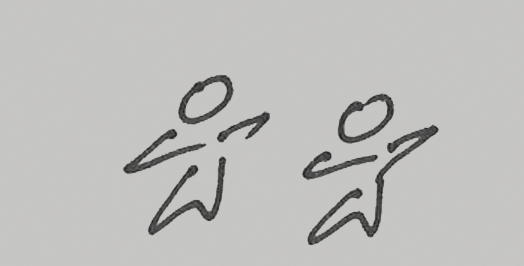

Principles
• All people, with or without formal education, have the ability to articulate and think
• People are active subjects, not objects
• We value immigrants as thinking beings and value development of immigrant leadership, including women and youth

Tips
• Constantly check your goals and objectives to see if you are on track toward program implementation
• If time constraints prevent you from completing one of your objectives, carry it over to the next cycle
References
• The Theory Behind Our Work booklet
• Glossary
• Popular Education Section How to Make it Work I
• TCOFP Section
BACKGROUND
The Role of the Tamejavi Cultural Organizing Fellowship Program (TCOFP) Coordinating Group
This tool provides suggestions for forming a coordinating group to support staff and fellows through the implementation of the program.
Following our practice of collective work for TCOFP, we formed a coordinating group. The group consisted of cultural organizers, artists, educators, and media experts who provided their expertise and played an active role in implementing the program objectives and activities. The coordinating group is a decision-making and advisory body.
A Successful Coordinating Group is committed to:
• understand the economic, political, cultural and social issues that shape Central Valley immigrant and refugee communities
• have a larger vision for social change and working towards making the Central Valley a more just and democratic place
• listen and understand the concerns, daily issues and dreams of immigrant and underserved communities, and believe that social change happens from the ground up
• make links and connections between people, places and organizations
• understand and respect the cultural values and practices of Central Valley immigrant communities
• believe in collective learning and collaborative work
• share popular education values and principles
• learn new and creative organizing strategies
• understand and value popular education principles such as building collective learning for social change
• appreciate the cultural and artistic life of their community, and understand and value the Central Valley’s cultural diversities
• following through for the program’s 18-month duration
• ensuring community issues are addressed
• bring people together
“As a Fellow of the TCOFP, I have had great experiences in terms of the cultural organization process and interaction with other fellows. I enjoyed how each fellow brought in a unique perspective of cultural values and belief systems to share. I learned a lot.”
Cher Teng Yang
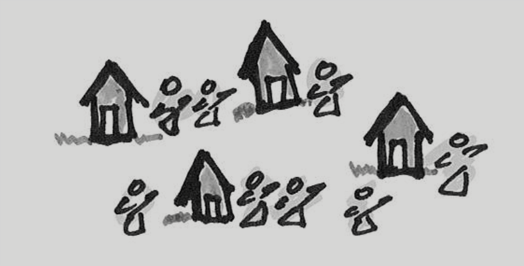

Principles
• People work collectively (in groups), share experiences, and encourage participation

Tips
• The coordinating group should be as diverse as possible
• Group members should have connections to the community
• Group members must have the time to commit to the program
• Group members need to take ownership of the program
References
• Cultural Inventory
• The Theory Behind Our Work booklet
• Glossary
• Popular Education Section How to Make it Work I
• TCOFP Section
BACKGROUND
Characteristics of The Tamejavi Cultural Organizing Fellowship Program (TCOFP) Fellows
This tool shares characteristics we looked for when recruiting the Tamejavi Cultural Organizing Fellowship Program (TCOFP) fellows.
We focused on finding grassroots emerging leaders within the immigrant and refugee communities that:
• were open to learning new and creative organizing strategies
• understood and valued popular education principles such as building collective learning for social change, and were committed to making the Central Valley a more just and democratic place
• placed high importance on the cultural and artistic life of their community and understood the Central Valley’s cultural diversities
• committed to community work, but weren’t so overcommitted that they didn’t have time for the fellowship
• understood the daily issues in the community and had a larger vision
• made links and connections between people, places and organizations
• addressed community issues
• brought people together
• cared about community change
Profile of a TCOFP Fellow
Genoveva Galvez was born in Guerrero, Mexico, in a small town called Copanatoyac. At the age of 8, she immigrated to the United States with her mother and siblings. The youngest of five children, Genoveva was the first in her family to graduate from high school and attend college. She is currently working toward a bachelor’s degree in business administration at California State University, Fresno. Her experience working in the fields under harsh conditions showed her the importance of teaching immigrant farmworkers about their labor and human rights. As a teenager, she joined El Quinto Sol de America, a grassroots organization focused on raising awareness about the dangers of pesticides and securing clean drinking water for people living in rural Tulare County. Through her involvement with El Quinto Sol, she discovered the power of culture and art, and strongly believes that these disciplines play a pivotal role in social change. Being fluent in three languages (Spanish, English and Mixteco) is one of Genoveva’s biggest assets as a young leader as it allows her to speak on behalf of those who seldom are ignored. She is able to bridge the communication gap to help her community address the issues that impact them most.


Principles
• Immigrant Leadership: We value immigrants as thinking beings and desire to enable immigrant leadership to emerge
• Priorities: The poor, oppressed and marginalized. We aim to accompany these groups through the process of reaching a deeper understanding of their power to change their conditions of oppression

Tips
• Provide this opportunity to grass root leaders that do not have or have limited access to resources
• Be prepared to confront communication challenges
References
• The Theory Behind Our Work booklet
• Glossary
• Popular Education Section How to Make it Work I
• TCOFP Section
BACKGROUND
The Tamejavi Cultural Organizing Fellowship Program (TCOFP) Nomination & Selection Process
This tool provides information about the Tamejavi Cultural Organizing Fellowship Program (TCOFP) nomination and selection process.
Nomination Process
Because of the uniqueness and commitment of the TCOFP, our staff and coordinating group decided to select fellows through a nomination process rather than an open call. The nomination process involved:
• identifying key community partners that had participated in our organization and had a deep understanding of our work
• developing a nomination form
• visiting the nomination partners to inform them of the program goals and implementation process, and to invite them to nominate a person who possessed the characteristics needed to be successful in the program
• meeting with potential candidates to educate them about the program and gauge their interest in participating as all candidates had to be willing to be nominated
• having the nominators submit nomination forms to the Pan Valley Institute and the coordinating group
• selecting 15 candidates from the nominations as semifinalists
Selection Process
• Semifinalists were invited to submit a personal statement outlining why they were interested in becoming a TCOFP fellow
• The coordinating group held one-on-one meetings with the semi-finalists
• The final selection process consisted of reviewing candidates’ personal statements and notes from the interview process. From there, 10 candidates were awarded the fellowship program.


Principles
• Priority is given to the poor, oppressed and marginalized. The program is aimed at accompanying these groups in the process of reaching a deeper understanding of how to change their conditions of oppression

Tips
• Make sure the nominators have a clear understanding of the commitment required by the program
• The nominator should convey as much accurate information as possible regarding program expectations to their nominee
References
• Cultural Inventory
• The Theory Behind Our Work booklet
• Glossary
• Popular Education Section How to Make it Work I
• TCOFP Section
implementation process
Implementing the Tamejavi Cultural Organizing Fellowship Program (TCOFP)
This tool shares the steps we took to implement the Tamejavi Cultural Organizing Fellowship Program (TCOFP).
Once the fellows were selected, they were invited to a one-on-one orientation. After doing a group orientation the first time, we learned doing it individually was more productive.
Orientation included:
• Introducing the Pan Valley Institute’s guiding values, principal and approaches
• A tour of the office and how to use resources available to them
• An introduction of the steps involved in the fellowship program
• Meeting one another, our staff and the different players involved in the fellowship program
• Sharing various communication protocols
• Discussing time management issues
Other implementation steps:
• Once all fellows completed orientation, they were invited to a residential gathering (see Residential Gathering Tool).
• After the residential gathering, one of the fellows’ first tasks was to form a learning group within their community. The Residential Gathering taught fellows about this process of forming learning groups.
• Within their learning groups, fellows were tasked with conducting a community assessment and cultural inventory.
• It’s expected that fellows visit with one another throughout the program.
• The program culminated with fellows submitting reports about the findings of their community assessments and cultural inventories. These findings were shared at the public event they presented during the Tamejavi Culture and Art Series (TCAS).
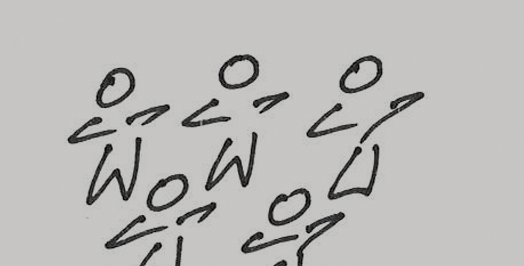

Principles
• Popular education is education
for transformation
• Provide a space where people feel safe to share life experiences

Tips
• Allow time for fellows to get to know each other
• We recommend a one-day orientation
References
• Cultural Inventory
• The Theory Behind Our Work booklet
• Glossary
• Popular Education Section How to Make it Work I
• TCOFP Section
implementation process
Hosting a Tamejavi Cultural Organizing Fellowship Program Residential Gathering
This tool explains the purpose of residential gatherings and provides examples of activities and trainings offered at these events.
Residential gatherings are retreats intentionally organized to remove fellows from their daily activities and bring them to a remote space in which they can avoid distractions in order to engage in deep learning and reflection. Residential gatherings also offer fellows a place and time to engage in informal interactions, build meaningful relationships, unlock creativity, acquire skills, and to practice and learn cultural organizing and popular education. Residential gatherings are only a first step in creating a space where people can reflect and build consciousness though deep dialogues centered around common problems that result in visions for solving such problems.
Each cohort of fellows participated in at least two thematic residential gatherings. The residential gatherings facilitated the process of building relations and interaction opportunities between the fellows. During the gatherings, fellows learned the different components and timelines of the Tamejavi Cultural Organizing Fellowship Program (TCOFP) learning journey. It helped them build confidence to share their experience with the public about the fellowship program and define their roles as fellows.
We discussed fellowship program activities, made a list of priorities, established timelines, calendars, and days they would come to the office. We also used the time for training, making art and group building spaces.
Examples of residential gathering activities and training:
• Creative lab
• Training on principles and values that guide our work
• Issue Analysis: Who is an immigrant? Who is a refugee?
• Engage in dialogues about community assessment and cultural inventory
• Building a shared agenda
• Community mapping
Glimpse of a residential gathering
On Friday, Pan Valley Institute staff arrive around noon to set up and prepare for the guests. Participants start to arrive after 2 p.m. to check in, get settled in their rooms and familiarize themselves with the venue. Fridays are usually more informal to allow space for participants to get to know each other and set the tone for the gathering. Activities include opening creative spaces and introductions to topics that will be the main focus the next day. Saturdays are more intense as this is when the trainings, presentations and deeper conversations take place. There are intentional “free time” spaces created to allow participants to take a break from the long day. Sunday morning is our time to reflect on the gathering as we share what we have learned. It is also when we plan our next steps before saying good-bye.
“I still remember the campfire night we shared. It was cool to stay up and chat. Everyone really inspired me and opened my eyes to a whole new world. Thank you all for sharing your stories, your culture, your wisdom and a part of who you are with me.”
Sokha Serey


Principles
• Provide a safe and welcoming space
• Collective study and mutual learning build one’s own knowledge
• We place high importance on our surrounding environment and its impact on our ability to think, learn and act

Tips
• It is challenging for people to be part of a gathering from beginning to end, but it should be highly encouraged to avoid disruption to the group
• Because we intend to provide a safe and welcoming space, avoid unexpected guests. You may not be prepared logistically for the needs of the unexpected guest; i.e. an interpreter
References
• The Theory Behind Our Work booklet
• Glossary
• Popular Education Section How to Make it Work I
• TCOFP Section
implementation process
Tamejavi Cultural Organizing Fellowship Program Capacity Building Training
This tool describes a few of the capacity building trainings offered through the Tamejavi Cultural Organizing Fellowship Program (TCOFP).
There is a distinction between capacity building and popular education. To “build capacity” means to develop new or build upon current skills, traits, knowledge, abilities, and other facets related to increasing personal growth and character. This is unlike popular education engagement, which is a consciousness buiding process
Training Examples:
• Decolonization: Reach a better understanding of the socially constructed conceptual framework of oppression: ethnicity, race, gender, third world culture, excellence art expression/production vs. popular art expression/production. Provide an insight of the internal and external factors that impact our identity and movement building. Acquire tools for fostering processes of decolonization and liberation in their cultural organizing work. Acquire critical analysis tools for facilitating cultural integration, preservation and transformation when becoming members of new societies. Lastly, look at the opportunities and challenges of building commonality and unifying voices in intercultural contexts.
• Intersectionality: Xenophobia, Islamophobia and Social Exclusion – A discussion on how to build individual consciousness about colonization, islamophobia, xenophobia and social exclusions. What does this consciousness look like in the community? Are they separate issues, or do they coexist? How do we take it to public spaces?
• Media Training: Participants learn how to speak to the media in a way that makes audiences take notice. How to clearly and concisely define key messages. How to develop prepared responses to difficult questions and take control of media interview. Lastly, there might also the opportunity to have a discussion of ways to identify hate speech.
• Documentation & Visual Communication Training: Participants learn how to document projects, the importance of documentation, the current standard in media, best ways to tell a story, how to find a story, how to archive the work and ways to share the media online.
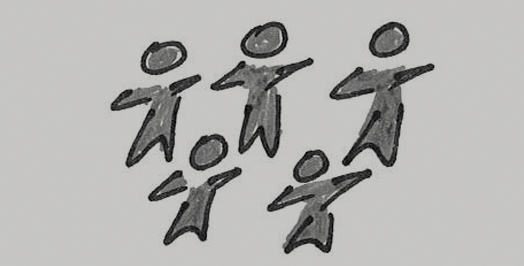

Principles
• Not teaching, but allowing participants to discover what they know
• The learning has to be relevant. We do not have a set curriculum because each group has to decide what they want to learn

Tips
• When we do bring in “experts,” they are representative of the communities we work with
References
• Decolonization Tool
• Glossary
• Documentation and Visual Communication Training
• Media Training
implementation process
Conducting a Community Assessment
This tool offers basic steps for conducting a community assessment as practiced by the participants of the Tamejavi Cultural Organizing Fellowship Program (TCOFP).
A central belief of the program was that participants not only learned the theory and principles of popular education, cultural organizing and participatory action research, but that the program offered opportunities for them to put those theories and principles to work. In order to do this, fellows conducted community assessments and cultural inventories intended to directly engage community members around issues that were important to them and created opportunities for them to partake in a creative learning process.
The community assessment included the following steps:
1. Formation of a learning group that included individuals from diverse backgrounds willing to volunteer their time and experience to help plan, assess and reflect about all aspects of the assessment.
2. Identification of key community contacts representative of various social, educational, cultural, traditional and non-traditional institutions that helped the fellows identify important community issues, needs, and readiness of the community to organize in action together. Key contacts included youth, elders, cultural holders, wedding and funeral ceremonial masters, shamans, community-based organization leaders, business leaders, media, etc.
3. Assessment of community issues and the community’s capacity to address them through informal one-on-one conversations, small group meetings, and first-hand observations.
4. Assessment of community assets such as cultural resources (performing spaces) and people (artists, traditional practitioners, arts administrators), as well as organizations and community-driven cultural activities (festivals and celebrations).
5. Reflection among team members and the fellows once information has been gathered on the community issues, followed by discussion on the most effective and appropriate approach to organize the community to come together to address the issue.
6. Evaluation of the cultural organizing process and activities based on the level of participation of the community, quality and efficiency of the work, satisfaction of community members with the work, and influence of external factors on the success of the work.
7. Determination of the impact and changes that have occurred in the community as a result of the of fellows’ cultural organizing efforts: changes in knowledge capacity; quality of discourse; shifts in attitude and values; increased capacity such as creative skills, leadership, and ability to take action; level of participation and mobilization; and changes in policies, systems, conditions and equity.
To ensure success in the community assessment, fellows employed several key practices: 1) Learning Groups; 2) Tools - Questionnaires, Community Dialogues, Observations and Surveys, and Media; 3) Trust-Building and Confidentiality; 4) Cultural Protocols; 5) Reflection; and 6) Documentation.
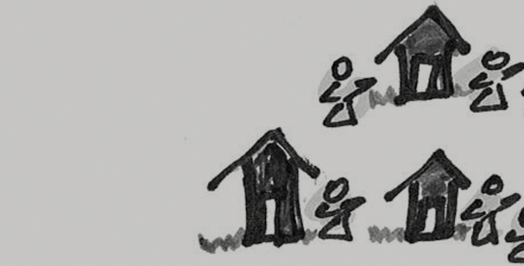

Principles
• Popular education is a conciseness building process that implies learning, knowledge and development for action

Tips
• A community assessment and cultural inventory must be rigorous, yet some flexibility is needed
• A community assessment is not academic research; it is intended to allow people to build their own knowledge
• Value peoples’ knowledge
References
• The Theory Behind Our Work booklet
• Glossary
• How to Make it Work I
implementation process
Tamejavi Cultural Organizing Fellowship Program Community Assessment Guide
This tool provides the key steps that guided participants in the Tamejavi Cultural Organizing Fellowship Program (TCOFP) while conducting their community assessments.
A community assessment offers opportunities to involve community members in reflection that enables them to identify issues that most concern them, as well as available cultural resources that can illuminate and stimulate action around those issues. This reflection will be both one-on-one as well as in groups.
Steps for Conducting a Community Assessment
1. Form a learning group
2. After learning group is formed, decide the purpose for conducting a community assessment
3. Identify key community contacts to help you
4. Identify important community issues that need to be addressed
• assess how ready the community is to take action to address them
• prepare a cultural profile of the community
• determine who is ready to assist in organizing action
• identify opportunities for reflection
5. Inform the community about your community assessment
6. Assess community issues and the community’s capacity to address them
• Amongst the things you will talk about with people during your community assessment are their observations about the problems that require community action
7. Decide the approach/methodology for the community assessment
• Questions you will ask
• Story telling
• Observation
• One-on-one meetings
8. Reflect upon the information gathered to decide on cultural action
9. Determine the impact of your community assessment and action
“Organizing begins at home…
Ask the questions that are at the center of your own lives. Ask them yourselves…
Think together and you will find the wisdom to go forward.
It’s not as complicated as it seems.”
Cesar Chavez, 1966
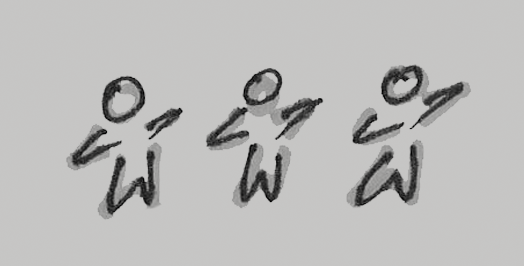

Principles
• We believe in the dignity of people’s experience and knowledge, including womwn and youth, and those who may not speak english, read or write

Tips
• Community assessment is not an academic researsh yet do not dismiss values of data gather
References
• Glossary
• Participatory Action Research Folder
implementation process
Community Assessment Reflection
This tool presents a guide we developed to help participants of the Tamejavi Cultural Organizing Fellowship Program (TCOFP) document their experiences, lessons learned and the challenges they faced when conducting their community assessments.
I. BACKGROUND
Based on your findings, present a picture of your community and its story. What should your community and others take from that story? Keep in mind that one of the intentions of doing a community assessment is to document your community story and share that story with others.
II. LEARNING GROUP ENGAGEMENT
Describe the extent to which your learning group participated in the community assessment.
III. APPROACH/METHODOLOGY
Describe which of the following approaches you took for conducting the community assessment: one-on-one meetings, interviews, observations, story circles, community forum, focus group, survey. What did you tell people when you approached them for the community assessment? Share some of the key questions asked. How many people did you talk with? Did you get their contact information?
IV. DOCUMENTATION
Describe the way you documented the information while conducting your community assessment.
V. KEY FINDINGS
List some of the key findings and discoveries from the community assessment. What process did you use to gather information? If you decided to focus on a particular concern, why and how did you arrive at this conclusion? Based on your findings, what is the community story you would like to share?
VI. COMMUNITY LEADERSHIP AND CAPACITY FOR TAKING ACTION
Talk about your community leadership or lack thereof. Are there any leaders in your community who can provide vision, direction and promote actions for addressing social and cultural issues? How do people in your community express/communicate their social and cultural concerns? Or do they express their concerns at all? Talk about the extent to which cultural values motivate people and supply vision to address their concerns. Describe your community leadership, creative skills and civic engagement for addressing concerns. Talk about the level of community participation and mobilization to address their concerns.
VII. LESSONS LEARNED
List some of the lessons learned while conducting the community assessment
VIII. IDEAS FOR ACTIONS FOR CHANGE
List ideas for actions to promote change you heard while conducting the community assessment. Describe the ability of your community to change policies, systems, conditions, or access to resources in order to achieve change. If this is not happening, why?
IX. CHALLENGES
Did you encounter cultural protocol you had to follow that might have presented challenges for doing the community assessment? For example, it might be that people in your community are not used to having dialogues about the issues they face. List any other challenges you encountered while conducting your community assessment

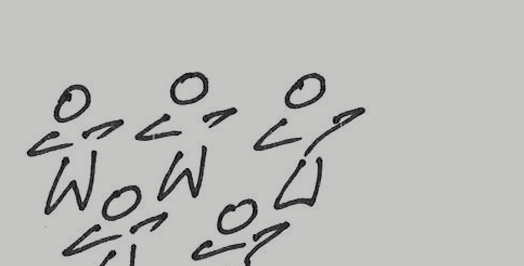

Principles
• We believe that through collective and individual learnings, sharings, reflection and action, we can transform ourselves and our communities, to improve the world in wich we live

Tips
• Sometimes people have challenges capturing information and this tool provides guidance for capturing information
References
• Glossary
• Participatory Action Research Folder
How the Tamejavi Culture and Art Series Differs from the Tamejavi Festival
Inspired by the Tamejavi Festival and guided by its principles and components, we tested a different approach for the Tamejavi Culture and Arts Series (TCAS). Instead of a two-day festival held in a single place, we decided to expand the experience and move it to other spaces outside of Fresno. The intent was to take what we’d learned from organizing five Tamejavi Festivals and share it with the Tamejavi Cultural Organizing Fellowship Program (TCOFP) fellows to help them present public events that would tell a community story.
Tamejavi Culture and Art Series
For the pilot phase of the first TCAS, the cohort of TCOFP fellows produced events in their own communities that were the culmination of their fellowship programs. We hosted nine different events over a four-month period. TCAS provides a cultural and artistic space for fellows to tell the stories of their community assessment findings. It offers a stage for local artists to shed light on their cultural assets and the diverse cultural richness immigrants are contributing to their new place. By organizing these events, fellows had the opportunity to practice what they learned and to build partnerships to support their project with local universities, schools, community colleges, small businesses, chambers of commerce, city councils, county boards, arts councils, and arts and cultural organizations. Fellows attended each other’s public presentations and participated in a post reflection event to critique and evaluate their projects.
Example of a Tamejavi Cultural and Art Series, 2015
Spoken Narratives: Journeys of Resilience
Cambodian Daily Lifestyle by Sokha Serey
This presentation depicted events that took place in Cambodia during residents’ daily lives. Its purpose was to help the next generation of Fresno Cambodian Americans and the general public understand Cambodia’s culture. Cambodian culture and civilization were lost during a period of war and political change; nevertheless, there is a renaissance of Khmer culture slowly blooming inside Cambodia and beyond. Inspired by Tamejavi, this group saw an opportunity to re-establish Cambodian culture in American society and throughout Khmer American communities. It was their hope that the community would remember the events that shaped Cambodian history, and that the result would be a strengthening and unification of communities. They wanted this event to inspire immigrants to value education, culture and the arts, and to work together toward building vibrant, diverse cultures in America.
Ashamed No More
Mixtecos from Copanatoyac, Guerrero, Mexico imparted the value of celebrating and acknowledging their cultural traditions and heritage for building a sense of place and belonging in a new country. During this one-of-a-kind day, Mixteca women from the unincorporated town of Tonyville shared their culinary knowledge and their efforts to preserve the authentic flavors of the mountain region of Guerrero, Mexico. Women prepared, exhibited and served a variety of traditional dishes like mole, pozole and memelas using distinct Mexican native ingredients like chile, frijol, corn, epazote and more. Ashamed No More resembled the indigenous tianguis, or outdoor market – the public space where people gather to tell stories, discuss public matters, display their crafts and artistic talents, and where children play and learn their cultural past and present. The streets of Tonyville were decorated with papel picado and filled with the traditional musical tones of chilenas. This event provided a safe, intimate environment where immigrant Mixtecos from Copanatoyac, Guerrero could display their cultural traditions.
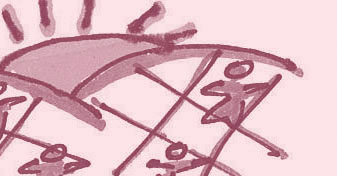

Principles
• People work collectively (in groups), share experiences, and encourage participation
• Provide a safe and welcoming learning space

Tips
• Crafting a community story into an event is not an easy task. It can be done, but requires a lot of work.
• Theater is an excellent way to tell a story
• Organizing this type of event requires resources

References
• The Theory Behind Our Work booklet
• Popular Education Section How to Make it Work I
• Glossary
• TCOFP Section
• TCAS Section
Guidelines & Parameters for Crafting Community Issues into Public Stories
This tool helps establish criteria for crafting a public story, as well as parameters to consider for hosting a public presentation.
To guide the fellows in crafting a public story that conveys community issues that inspire and call for action, we established the following criteria:
• The stories should be presented in public as a culture and arts event or community dialogue.
• The story has to connect and communicate a community concern that fellows learned while doing their community assessment and cultural inventory.
• There has to be clarity in the art form in which the story is presented to the public.
• The public presentation, planning and organizing of the story is expected to provide opportunities for community engagement.
• The public presentation of the story provides opportunities for inspiring fellows’ community creativity.
• The production of the public presentation is to be original and add to the fellows’ community cultural and artistic existing inventory.
• The story should inspire community action and continuation of organizing.
• The story has a clear public educational intention aimed at their own community, as well as the general public.
• A public story includes three elements: a story of self, a story of us, a story of now.
Parameters for Public Presentation of Stories
Indoor events – The actual presentation should last a minimum of 60 minutes; 80 might be considered in the case of a high-quality event
All program events should include time for: telling the story of TCOFP, TCOFP photo exhibit, Telling Community Stories Exhibit (results of community assessment), post-event dialogue and reception
Outdoor events – Outdoor events can last up to six hours, including time for telling the story of TCOFP, TCOFP photo exhibit, Telling Community Stories Exhibit (results of community assessment), post-event dialogue and reception
Other – Budget should be allocated in accordance with the level to which the story meets the criteria.
Fellows, their learning groups and cultural and artistic teams should have a clear understanding of the commitment and time required for the planning and organizing of the public presentation.
Fellows and learning groups should have a clear understanding of the role of all involved in the organizing of TCAS, including fellows, learning group members, PVI staff, TCOFP coordinating group, artistic mentors, artists, cultural holders, etc.
The presentation of the public stories is a collaborative collective effort; therefore, fellows and learning groups are expected to be open to suggestions and negotiation from and with all parties involved.


Principles
• Increasing access to public space for cultural expression is key

Tips
• Consider weather when planning an outdoor event
• Check-in with people weeks in advance about venues and technical needs

References
• “Three Elements
of a Public Story” Tool
• Telling Your Public Story:Self, Us, Now by Marshall Ganz
• The Theory Behind Our Work booklet
• Popular Education Section How to Make it Work I
• Glossary
• TCOFP Section
• TCAS Section
Elements of a Public Story: A Story of Self,
A Story of Us and A Story of Now
This tool is inspired by the worksheet, “TELLING YOUR PUBLIC STORY: Self, Us, Now” by Marshall Ganz. We found the worksheet useful when working with TCOFP fellows in the development of their public stories.
A pubic story includes three elements:
1. A story of self: why you were called to what you have been called to
2. A story of us: why your constituency, community, organization has been called to its shared purposes, goals, vision
3. A story of now: the challenge this community now faces, the choices it must make, and the hope to which “we” can aspire
Example:
“Ashamed No More” or “Preserving My Culture” by Genoveva Vivar
The Story:
A STORY OF SELF:
I immigrated to the U.S. with my mom, brothers and sister at the age of 7. I don’t want to lose my heritage nor forget where I come from. I want the world to know how valuable and important my culture and the traditions are.
A STORY OF US:
Explain how my community has changed its tradition after immigrating to the U.S.
A STORY OF NOW:
How is losing our traditional cooking skills affecting us and how can we prevent it from happening? A first step in doing this was to demonstrate the variety of traditional cooking styles in my community.
“I believe that women are the cultural holders of my community. While doing my community assessment, I came to realize that if women are given the opportunity and space to share issues they relate to, they are more than willing to express themselves…because the majority of them don’t usually talk.
They were clearly excited to have the opportunity to communicate about their crafting and cooking skills in their own language and welcomed the chance to share with each other what they know.”
Genoveva Vivar
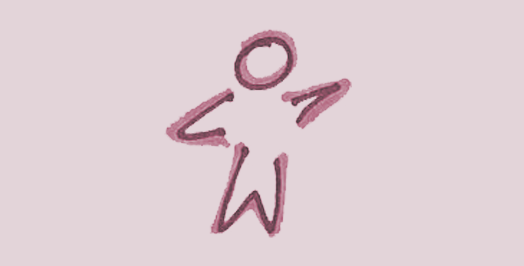

Principles
• When combined, cultural exchange and community organizing increase the impact of local efforts to improve Valley communities and strengthen organizing networks

Tips
• It was good talking to fellows since the beginning about a “story” rather than an event
• It is not easy to transform ideas into practice

References
• The Theory Behind Our Work booklet
• Glossary
• Popular Education Section How to Make it Work I
• TCOFP Section
• TCAS Section
Artists in Residency Program
Through our Artist in Residency program, we were able to bring professional artists to the Valley from other parts of the country and world. The idea was for the artists to spend time in the community and lead a workshop on their discipline. Designed for immigrant artists, poets and filmmakers, the workshops sought to engage the public with diverse artists.
Featured Artists in Residency
Born in Buenos Aires, Argentina, Ernesto Torchia identifies himself as a man of theater. He has a solid reputation as an actor, director and professor of theater and film. He worked with the Zapoteco youth in developing the Fandango Zapoteco play in 2013. He was very much imbedded with the community as he spent a few days a week rehearsing and enhancing their skills as actors. He also provided advice to the Cambodian group who was working on waving dances and skits as part of the Legacy of Angkor. Additionaly, he supported the Pan Valley Institute in the development of our 2013 Grand Finale.
Marta Toledo is a Zapotec singer from Istmo de Tehuantepec, Oaxaca. Her visit happened to be scheduled right after the earthquake in Mexico in September 2017 so upon her arrival, she met with the community to share her firsthand experiences. She also made a visit to the fields in Madera, Calif. to bring music to the farmworkers.
Maestro Fausto Sandoval Cruz took part in a few presentations offering an overview of Mexico’s indigenous people, focusing on the origins of the Triqui people as registered through their oral traditions and historic documents. He discussed their social and political structure and the challenges the Triquis face in keeping their history, culture and language alive. While on his visit, he also met with the local Triqui community who welcomed him and shared about their lives in the United States. Members of the Triqui community shared their concerns about the generation gap that is causing loss of language and tradition among younger generations.
Adam Bowser who is a New Jersey native also known as ShadoKat, has exploded upon the spoken word scene, rousing audiences across the United States and Europe in a number of notable venues. Using hip-hop influenced style and cynical humor, his passionate messages don’t shy away from various topics that speak to social awareness.
He held an oral tradition workshop with the following objectives:
• Explore ways of bringing the value of oral tradition to the front of the spoken word arts
• Reflect on the connection of oral tradition with contemporary art
• Find ways of validating poetry within community
• Bring local poets and spoken word artists to build poetry, oral tradition and spoken word experiences
• Meet with spoken word artists and oral tradition masters to discuss ways of supporting and emphasizing tradition rather than adapting tradition to fit into contemporary expression and media
“Tamejavi has been the only event in the Valley that has provided value to immigrant artists and that has redefined art. This definition of art has demonstrated that there are many types of art; not only what many consider “high end” art, an area where immigrant artist are often excluded.”
Myrna Martinez Nateras
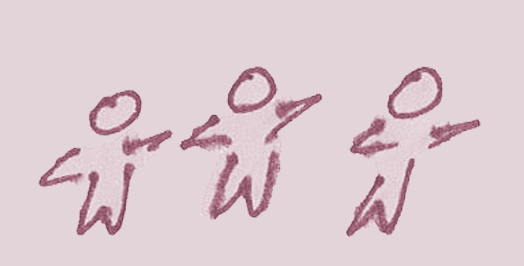

Principles
• Not teaching but allowing participants to discover what they know
• Tamejavi incorporates learning from experienced artists, presenters and cultural workers and believes that participating groups have the capacity to make decisions about the direction and presentation of their work

Tips
• Invited artists are here to share their craft and support local artists in enhancing their skills
• Artists in residence have to be from communities we work with and be willing to be embedded in the community
• Invite artists that are willing to transfer their knowledge

References
• The Theory Behind Our Work booklet
• Glossary
• Popular Education Section How to Make it Work I
• TCOFP Section
• TCAS Section
The Importance of an Event Planning Document
The event planning document exists to have all components of organizing an event in one single document. It’s a “living document” in that it is constantly changing as the event planning process evolves.
Components of an Event Planning Document
Title: What will you name your event? What will the tittle communicate?
Goal: What are you trying to change by holding this event?
Objective: What are the objectives you are trying to accomplish with this event?Date: When will the event will take place?
Possible Venues: Possible venues for hosting your event
Suggested Activities: What activities will the event program include?
Program: A run-down of how the event will flow from beginning to end
Planning Committee: Who else will be working with you in organizing this event? Who else should you invite to be part of the organizing committee?
Sponsors: Who can you ask to support your efforts by sponsoring the event?
Promotion/Outreach: How are you going to invite people? What materials will you need to promote the event?
Budget: Whether working with a large or small budget, it is important to allocate funds to things you will need to pay for such as food, a venue, childcare, decorations, etc.
Logistics: What will you need in terms of logistics? i.e. sound system, microphones, etc.
Human Resources: This category includes people that will lend their expertise to your event; i.e. a technical manager, interpreters, note takers, volunteers
Timeline: The schedule of when things need to be in place
Tasks: Assignments for all people involved in the planning, including deadlines
Example of Planning Document
TCOFP
Event Planning Document
-
Title
-
Goal
-
Objectives
-
Dates
-
Possible Venues
-
Suggested Activities
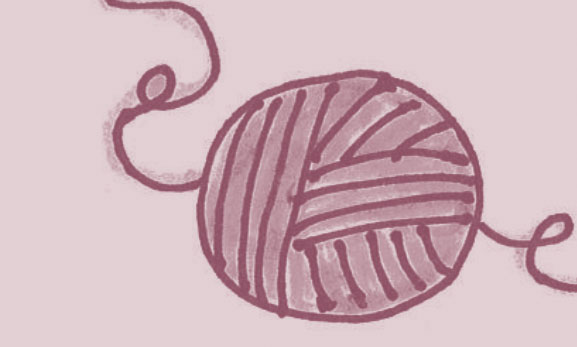

Principles
• Working with individuals interested in collective learning, engaging others and forming groups of people

Tips
• The event planning document should be the first document you turn to when you have an upcoming event
• Establishing a date for an event is challenging because there are many things to consider; i.e. are there other events happening the same day, what venues are available, when are people available?

References
• Event Planning Tool
• The Theory Behind Our Work booklet
• Glossary
• TCOFP Section
• TCAS Section
• Tamejavi Festival Section
Evaluation Approaches: Tamejavi Cultural Organizing Fellowship Program (TCOFP) Alumni Interview
In this tool, we share an example of an evaluation we did with the alumni that took part of the first cohort of the Tamejavi Cultural Organizing Fellowship Program (TCOFP).
We reached out to fellowship alumni to see whether or not they remained involved in cultural organizing and how their time in the TCOFP influenced their lives and the lives of those in their community. The purpose was to allow us to measure the individual and community effects of the program upon its completion and to allow us to plan for future TCFOPs.
To gather the information, we contracted a consultant to conduct one-on-one interviews. The consultant contacted each participant for an interview that centered around three main themes: 1) Discuss how you are sustaining your cultural organizing work; 2) Discuss the specific supports systems that are required and available for you to sustain your work including access to networks and resources, space and development of cultural organizing skills; 3) Discuss any other comments you have regarding your TCOFP experience.
Cultural Organizing Questions:
• Have you continued cultural organizing work since the completion of TCOFP?
• What key issues are you addressing through your cultural organizing work?
• What are the key rewards/benefits of your continued cultural organizing work?
• What are the key challenges in sustaining cultural organizing work?
Cultural Organizing Key Findings
All seven of the consulted alumni continued to participate either directly or indirectly in cultural organizing work which benefits their immigrant communities.
Several alumni continued to be involved with their learning communities as mentors and advisors during cultural events within their immigrant communities. These are often tied to annual holidays and religious events, contributing to cultural offerings being maintained, and the cultural organizing skills and capacity of learning group participants being increased.
These alumni indicated that the skills, tools and cultural organizing experience gained through the fellowship provided them with the confidence to propose and undertake activities within their work setting which provided an opportunity to increase cross cultural understanding.
Supports Systems Questions:
• What networks (formal or informal) are you involved with which support your work? For example, do you maintain contact with other TCOFP alumni?
• What resources are available to support your continued cultural organizing work? (financial, in-kind, organizational, community)
• What resources are needed for continued organizing work?
• Do you have access to space for cultural organizing work?
• How are you developing your cultural organizing leadership capacity and leadership capacity within your community?
• What types of cultural organizing tools are you continuing to use? Story circles? Cultural sharings? Learning Groups? Community Assessments? Cultural inventories? Other?
Support Systems Key Findings
Networks: Alumni developed a broad network of organizations and community stakeholders and resources that they are able to draw upon for their work. These networks include universities, social service and immigrant service agencies, K-12 school representatives, chambers of commerce, radio stations, foreign consulates, immigrant community leadership groups, cultural organizations and museums, community stakeholders and leaders, churches, temples, as well as community-based small businesses.
Space: Access to space was not noted as a key issue among alumni consulted during this outreach effort. It appeared that communities were able to continue to rely on venues that were identified through the earlier fellowships (community centers, parks, church halls). One alumni noted that access to space would be more of an issue if an event grew in size and required a larger venue with added costs.
Leadership Development: One alumni accessed outside leadership development training; however, none of the other alumni sought further cultural organizing or leadership development training. This is likely a testament to the in-depth and comprehensive training received during the TCOFP fellowship. Several alumni used the skills gained from the fellowship to continue their community cultural organizing work, to mentor emerging leaders and to forge new community partnerships.
Other Key Findings
Findings from this TCOFP alumni outreach pointed to the following future planning recommendations:
• Continue outreach efforts to alumni. While this initial outreach was not able to connect to all alumni, it nevertheless provided important insight into the continued cultural organizing work undertaken by alumni and offered valuable information for future fellowship planning. PVI may consider organizing an annual family friendly retreat to periodically connect with alumni. The retreat can be organized to also provide professional development opportunities for alumni.
• Consider developing a “Next Level” shorter-term TCFOP fellowship focused on sustaining and broadening partnerships and networks created through the first round of TCOFP alumni. This is already occurring as part of the existing longer term TCFOP as three of second year TCFOP fellows are emerging from the same communities and continuing work of the first-year alumni.
• Consider developing a fellowship or an educational program geared specifically to professionals within educational, social and health organizations that serve immigrant communities. TCFOP fellowship would formalize some of the networks and partnerships created by previous alumni.
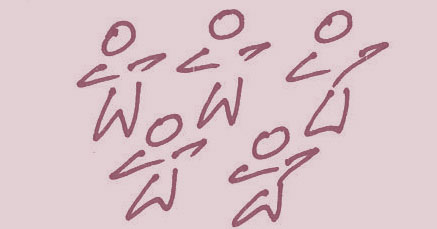

Principles
• The process has different closing points

Tips
• It’s important to learn about the long-term impacts of an event or program once it’s completed

References
• The Theory Behind Our Work booklet
• Glossary
• TCOFP Section
Evaluation Approaches: Tamejavi Festival Post-Reflection
Pan Valley Institute takes steps to measure the successes and challenges of each program or project that we undertake using an evaluation process. This tool shares some examples of how we evaluated one of our largest events.
Staff Evaluations
At the midpoint and conclusion of a program or project, Pan Valley Institute staff gather to address what worked, what didn’t, what was missing, what should be done differently the next time, lessons learned, and next steps. Participants are taken through the same process, and one-on-one interviews are conducted as needed.
EXAMPLE
Evaluation/reflection process used following the second Tamejavi Festival
Purpose:
• Reflect on and debrief after the 2004 Tamejavi Festival with the learning group about their activities and experiences
• Bring cultural organizers together to share their experiences
• Collectively discuss what it means to them to be “cultural organizers”
• Share resources, skills and learning with one another to help strengthen future work
• Begin the process of documenting and analyzing what it takes to do community organizing and popular education work using arts and culture in order to share learning with artists, organizers and interested community members and supporters
Goals:
• Collect information on the Tamejavi project to help determine future direction
• Define the roles and key factors in organizing through culture and the arts
• Start to define the necessary skills and abilities to be a cultural organizer
• Collect information that will allow us to build on our current knowledge base and popular education practices that we can implement moving forward
Post-event Reflection Questions
1. What worked and what didn’t?
2. What would you do differently? What did you personally learn or take from participating in the festival?
3. What do you think others in your community learned or took away from this event?
4. What kinds of issues were raised for you while attending the various performances and activities at the festival?
5. What kind of future relationships, work or action should result from this festival?
6. How would you describe your own personal experience with the three-day event?
7. Did the event and all the work leading up to it change anything for you, for participants, or for Fresno and the Valley in general?
Dialogue with the Cultural Organizer: Consider starting with a general check-in about how they felt about their role in facilitating the learning groups and the build-up to the festival. Possible questions could include:
1. How do we take our work to the next level to engage and include more people, deepen the inquiry, and, in some cases, move from learning to action and from intimate program work to public dialogue and problem solving? This could be general, open dialogue or it could take place through some sort of creative activity.
2. Cultural Organizing Skills, Resources and Support Systems: If we come to some understanding about what this work is and why it’s important, we can take some time to start to develop an inventory of the skills, resources and supports necessary to do the work. This conversation might also include:
• Types of partnerships, relationships, leadership, vision, and individual and group support that are necessary for success
• How to bring more people together across the lines that often divide artists and organizers, youth and adults, community members and academics, etc.
• Skills required to do the work
• Public spaces where the work can be shared with broader audiences and participants
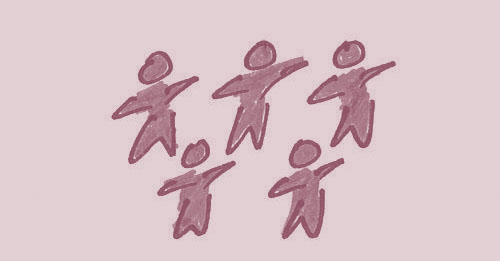

Principles
• Offer feedback about the process once projects are complete
• The process has different closing points
• Look back at the process to see what was learned and plan for next steps
• Consider closing one cycle and beginning a new one

Tips
• Do the evaluation as soon as possible after the conclusion of a program, event or project

References
• The Theory Behind Our Work booklet
• Glossary
• Popular Education Section How to Make it Work I
Evaluation Approaches: What Did We Learn?
The Pan Valley Institute has always believed in the importance of having checkpoints in place for either implementing a project or coming together with a group of people to collaborate on reaching a specific goal. It’s a process we use whether we’re implementing a cultural organizing fellowship program, collaborating with a Human Rights Coalition to organize an annual event, or joining a coalition to advocate for immigration reform. We also evaluate and reflect at the conclusion of events like the Tamejavi Festival to collaborate on what we learned and determine next steps. In this tool, we share our philosophy of the evaluation process.
We see evaluation as an opportunity to stop and reflect on what are we doing well and what should be changed or improved so we can make the appropriate adjustments. The most important outcome of an evaluation is the gathering of lessons learned and the practical application of those lessons as it allows us to continue growing as an organization and avoid stagnation.
Evaluation is important because it provides an idea of the impact something has. When we talk of evaluation, most think of whether or not something was successful, but don’t necessarily look into why something succeeded or failed. Therefore, there are some things to keep in mind about evaluation; i.e. What is the impact you are evaluating? What are you measuring? For example, are you measuring what you achieved politically with a referendum, or do you measure the consciousness-building and engagement that have been developed? Do you measure the social changes occurring because of your work? It is just about measuring?
Challenge: One of the challenges of this process is that the non-profit system has its own way of evaluating how the community measures success. Traditional evaluation may be effective in satisfying your donors, but it may not help you determine what you are doing right or wrong, what should be changed, and what to eliminate.
Evaluation has to be participatory: The traditional evaluation for donors is shifting toward participatory evaluation, rather than whether the objectives or goals were accomplished. They are taking a more methodological approach toward evaluation; that is, what works or doesn’t work and why.
Evaluation is not about highlighting failures, but rather the learning that has taken place. In order to be effective, evaluation has to be done internally by those personally involved, and not by outsiders. This is the only way for groups to measure what learning has taken place.
It is vital for groups or organizations to strategize and have a working evaluation plan in place from the beginning. Additionally, create a competency of spaces from where people can repeatedly come together, learn and discuss what they are doing. It may be helpful to think of it as interpretation rather than evaluation.
Finally, how do we assess our own transformation? A man back in the old south who could not vote (gross evaluation) now has a son that can vote. Something happened over a period of time that allowed the son to vote. Evaluation should be thought of in this context: Where are the people now? Are the people less mobilized? Losing the battle might be seen as a failure, but the experience itself of being organized, receiving a political education and influencing political ideas that could last forever is the impact we ought to be interested in.
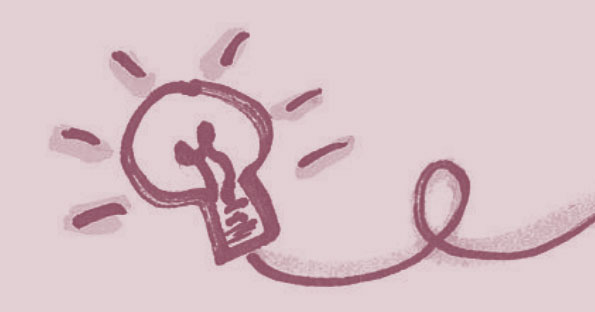

Principles
• Popular education is a conciseness- building process that implies learning, knowledge, development for action, reflection about the process, and planning for next steps.

Tips
• Don’t be resistant to admit that some approaches might not work. If something isn’t working, stop doing it and be creative about what can be done instead.

References
• The Theory Behind Our Work booklet
• The Glossary
• How to Make it Work I








